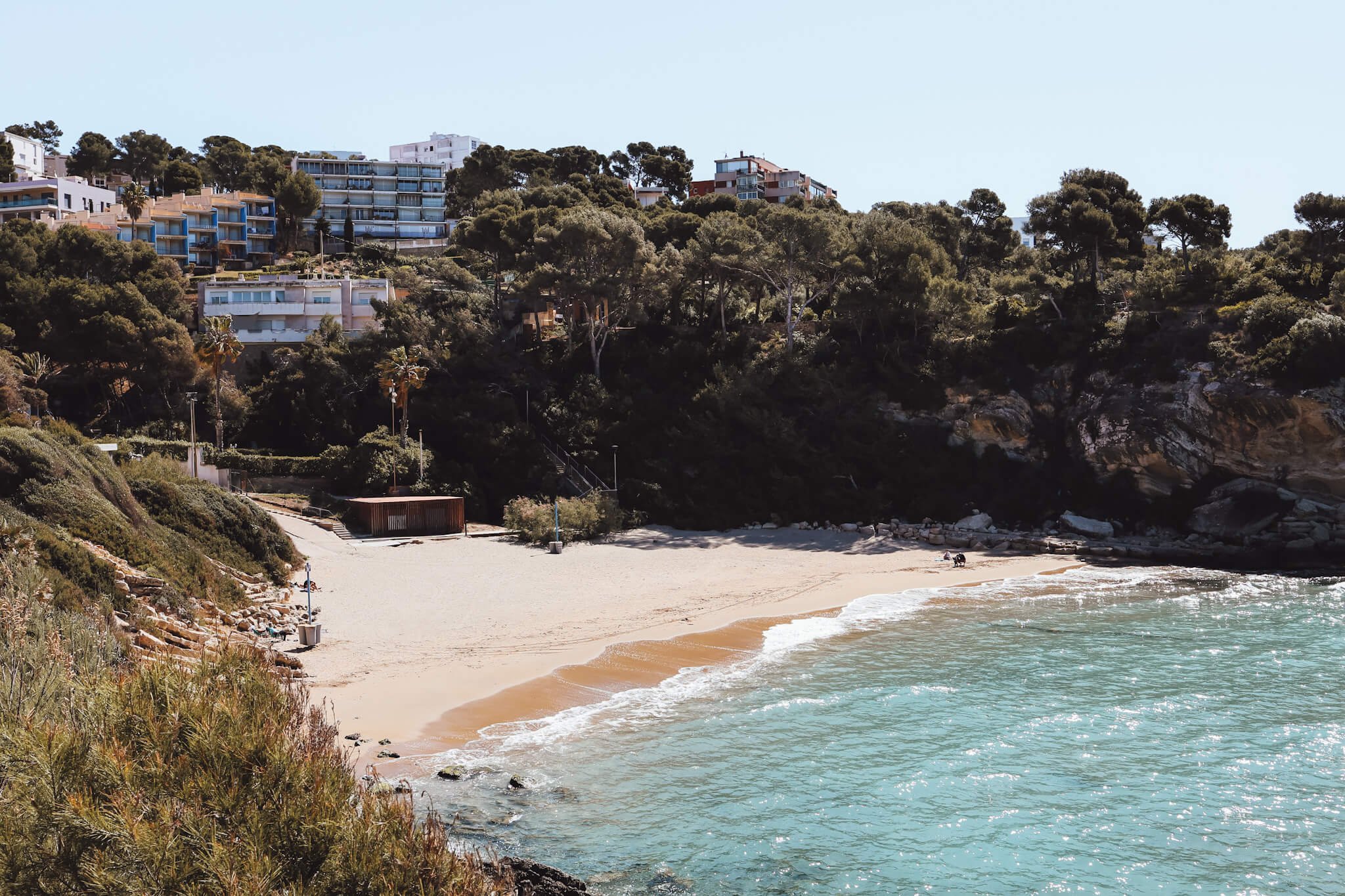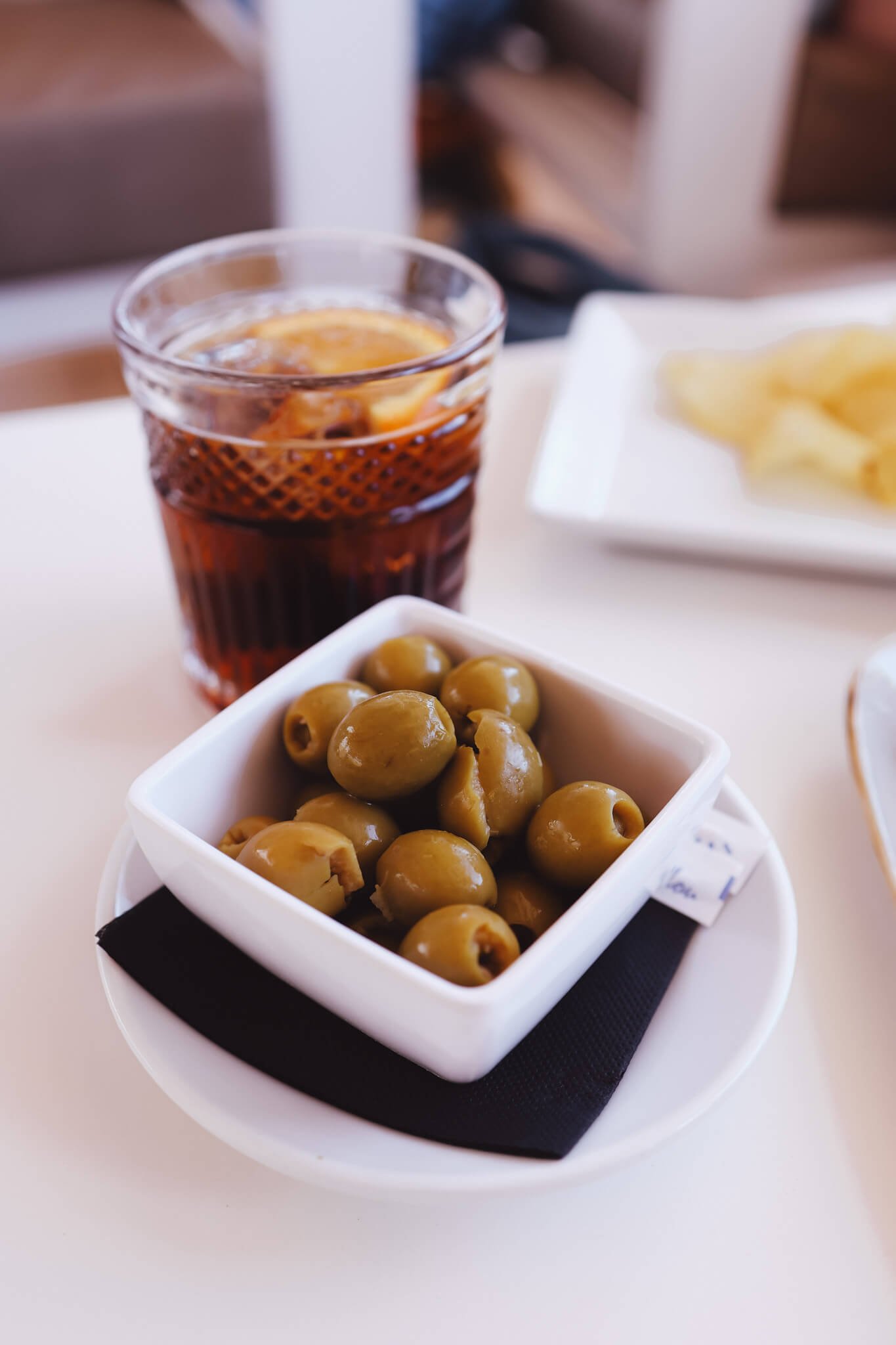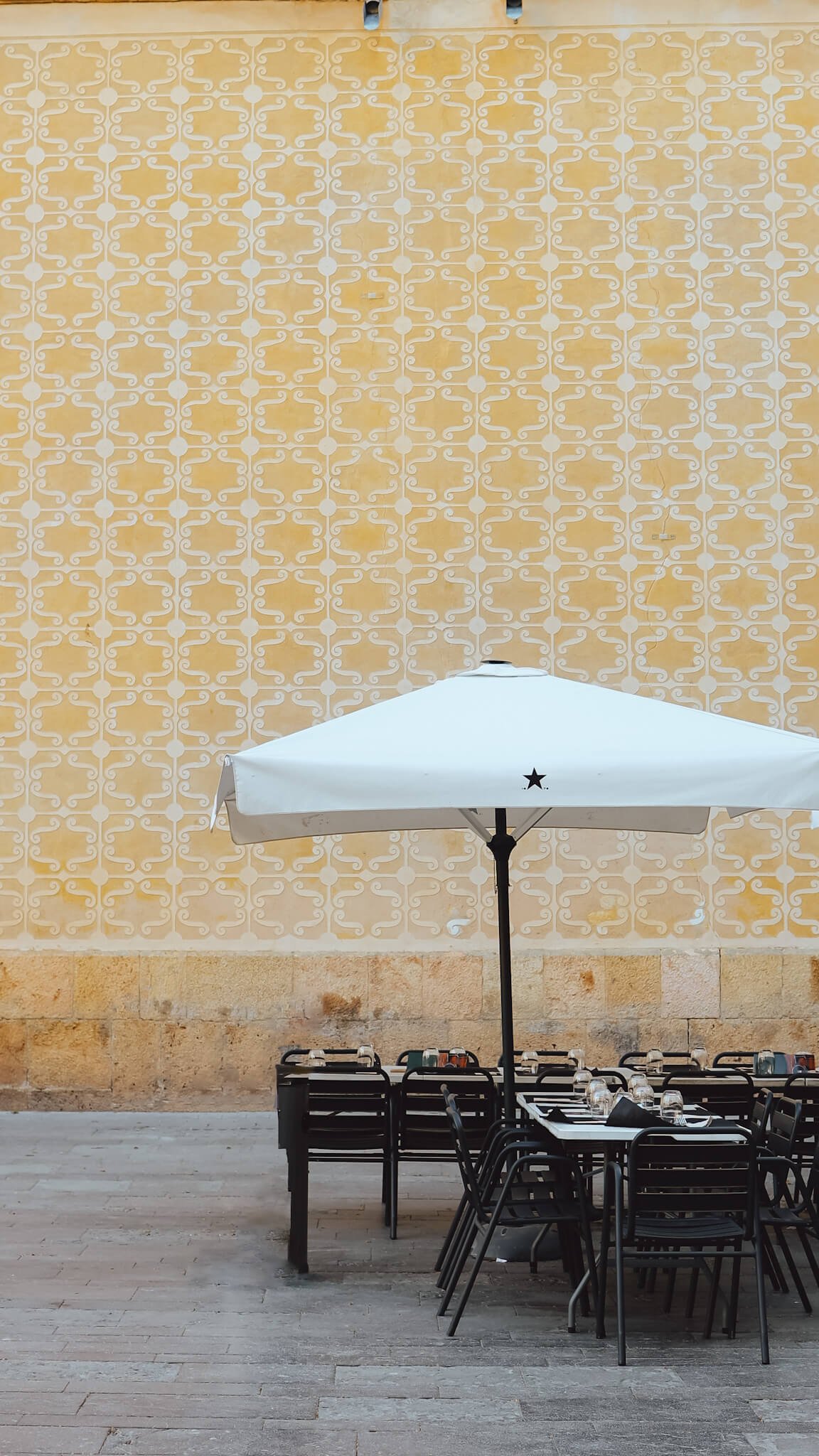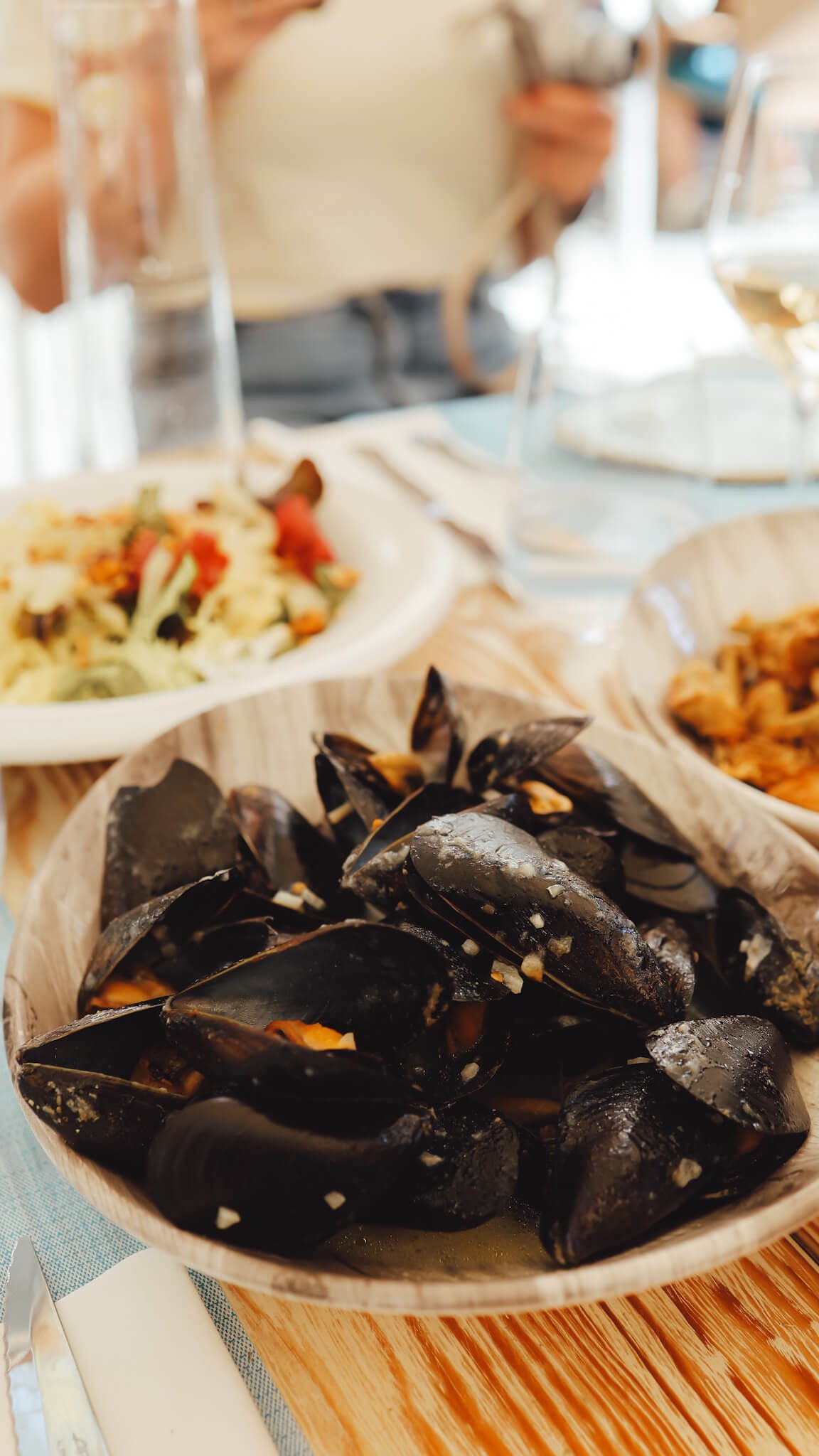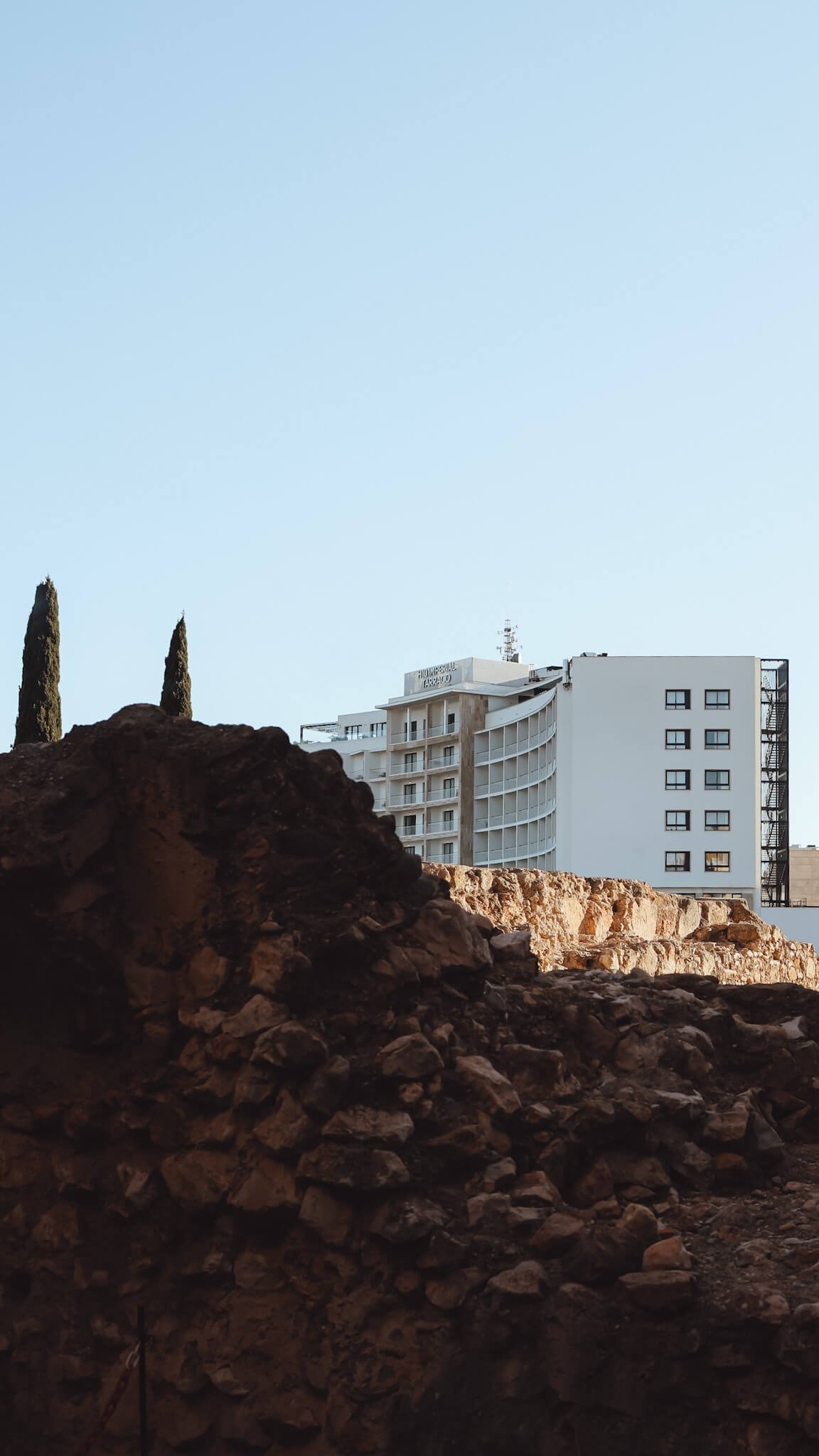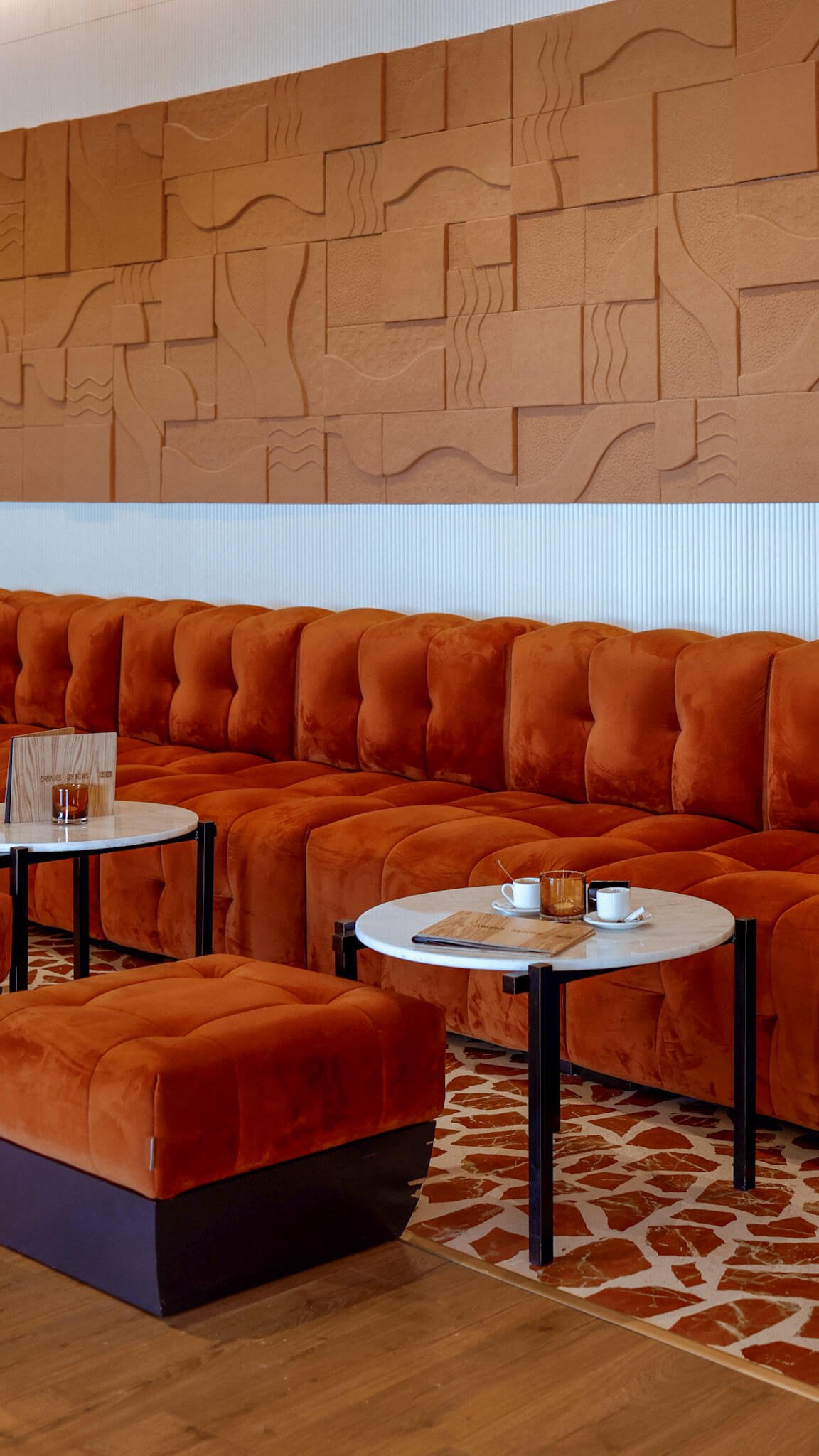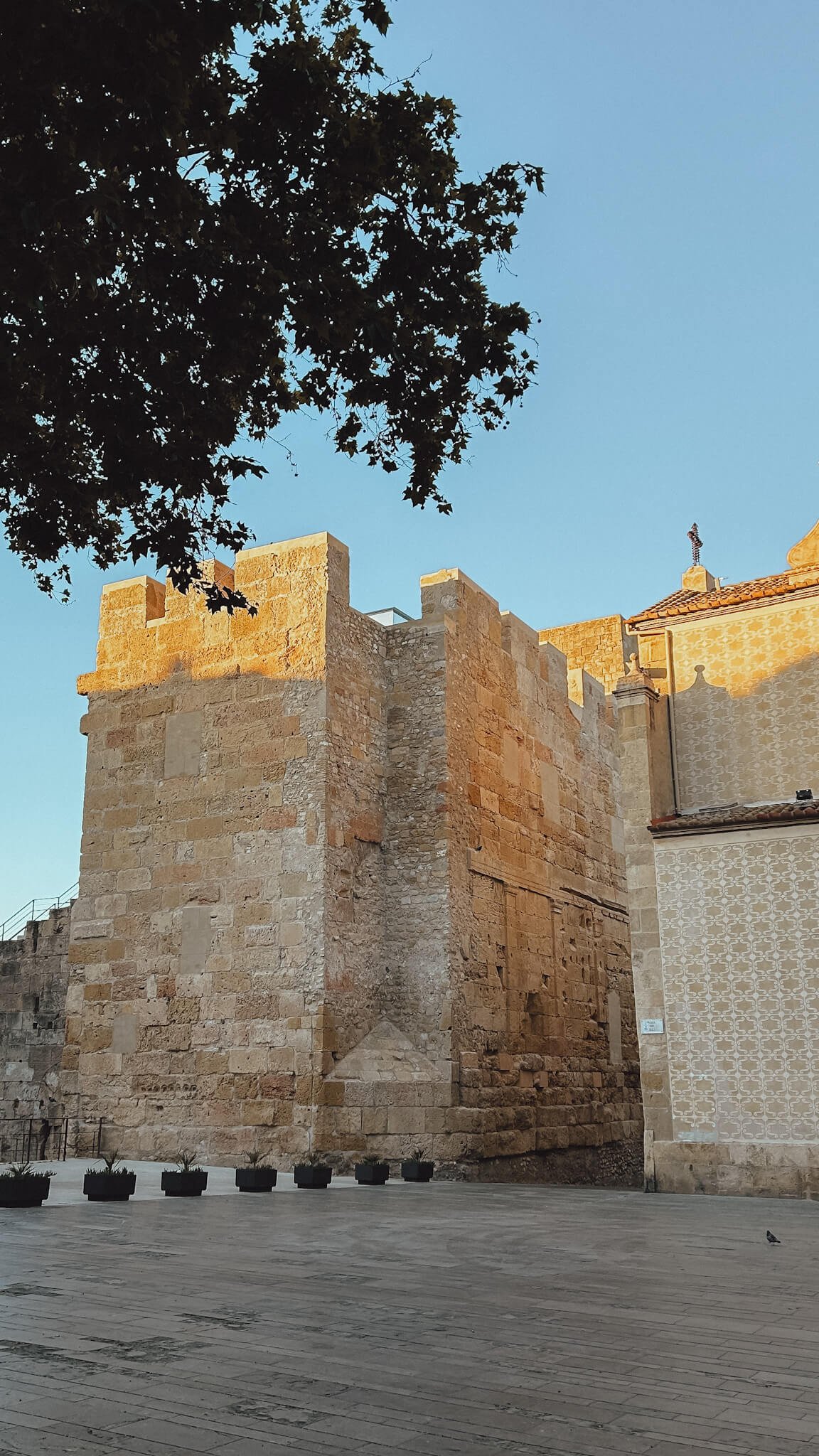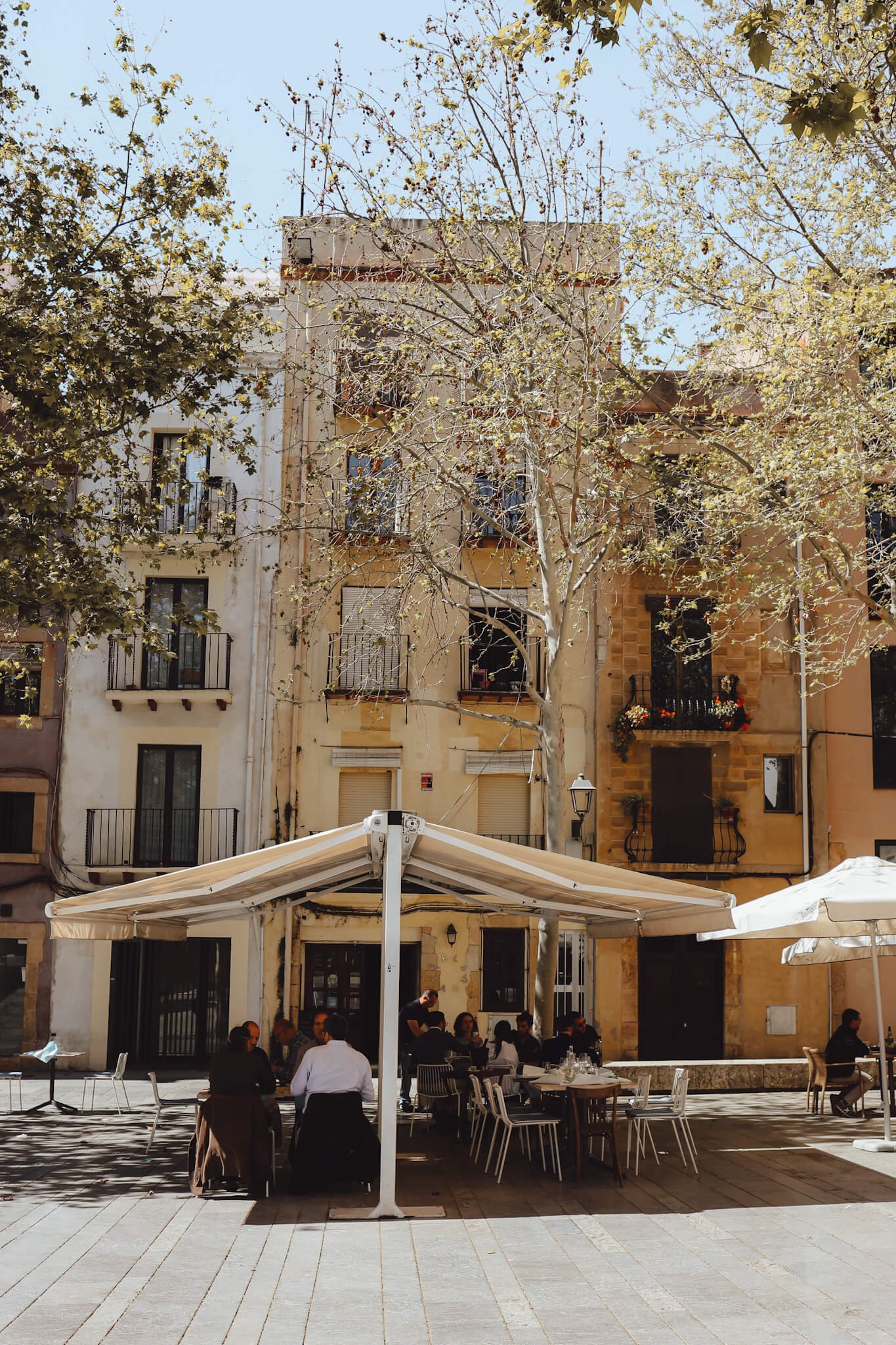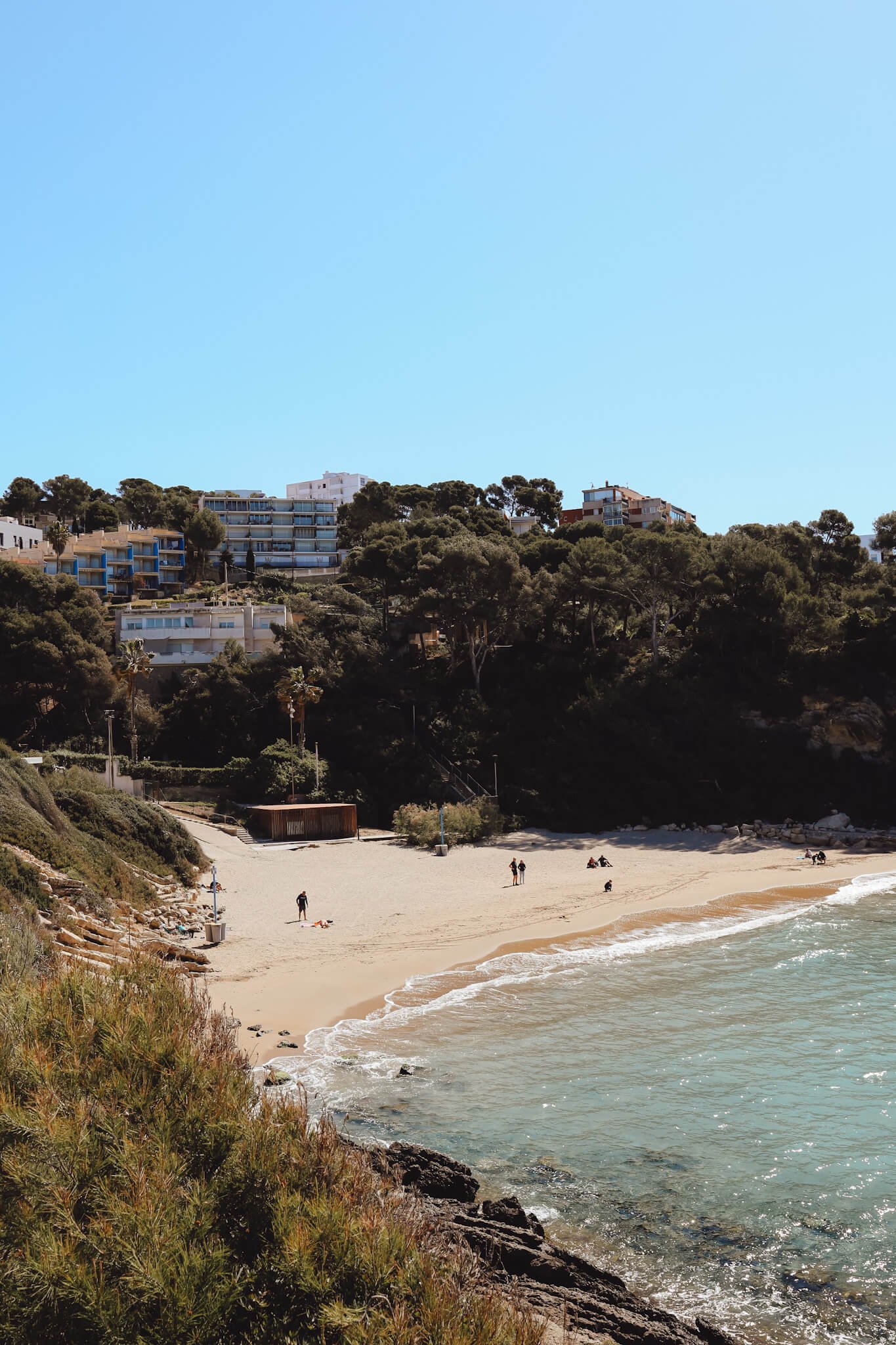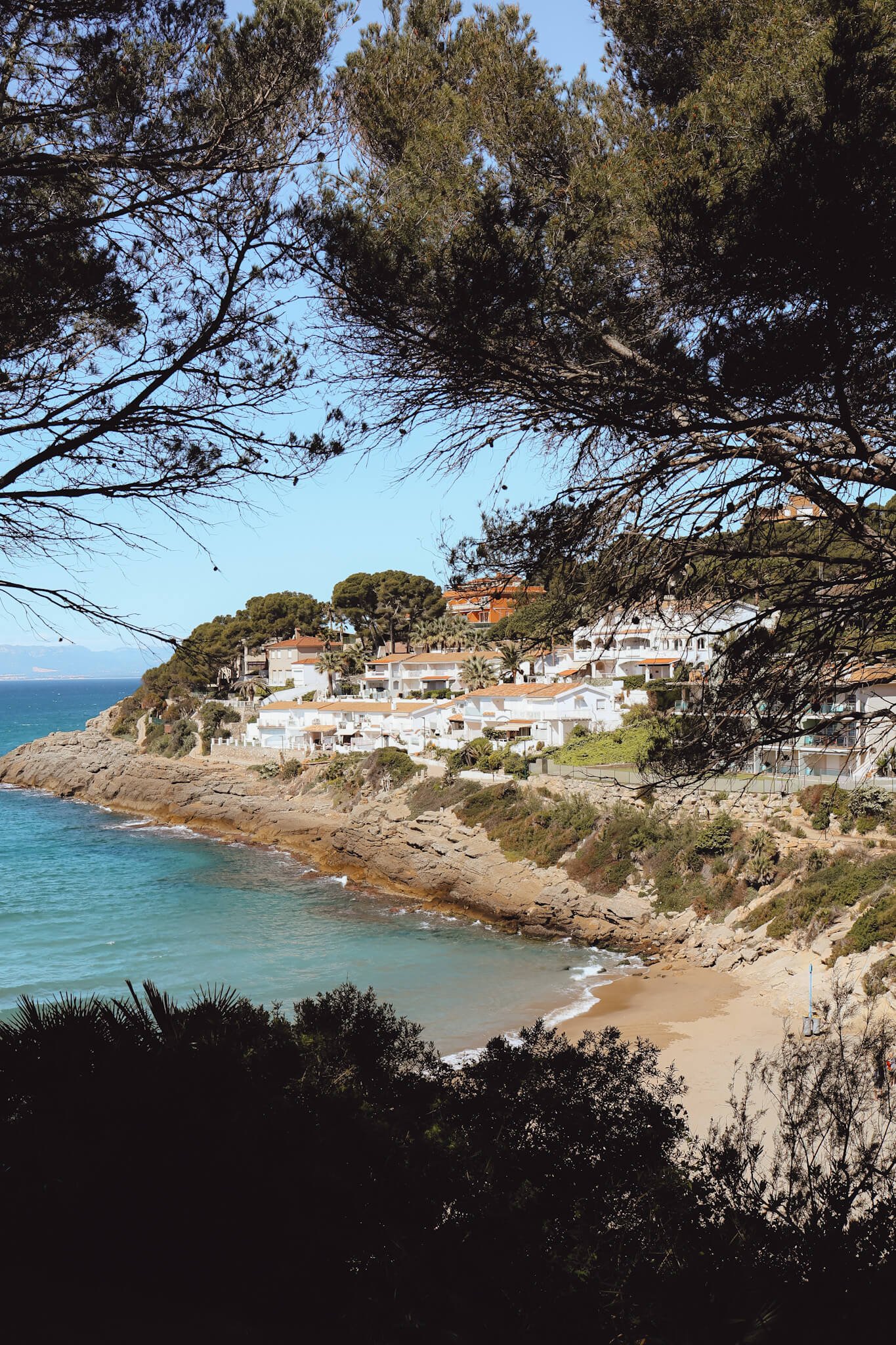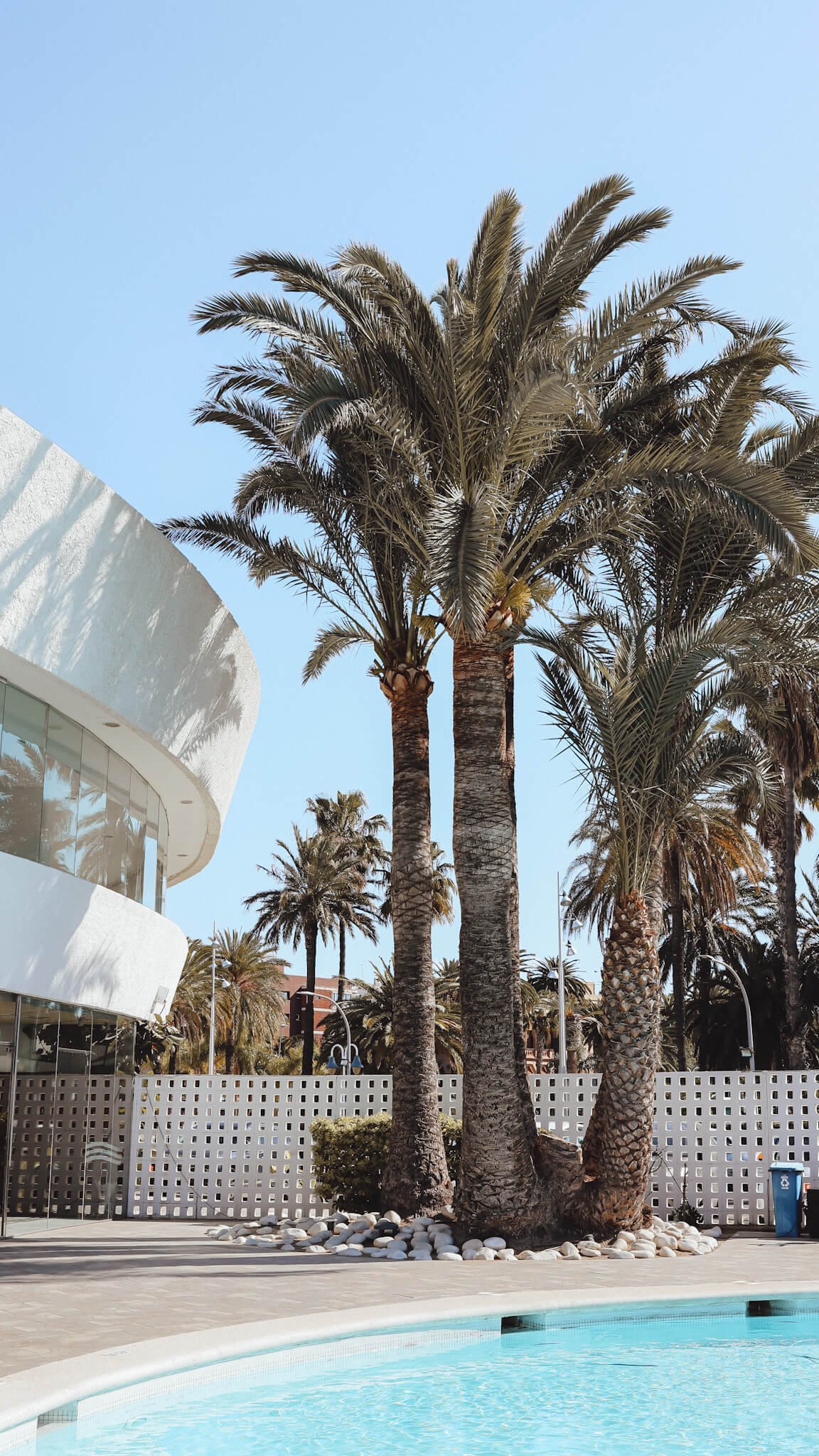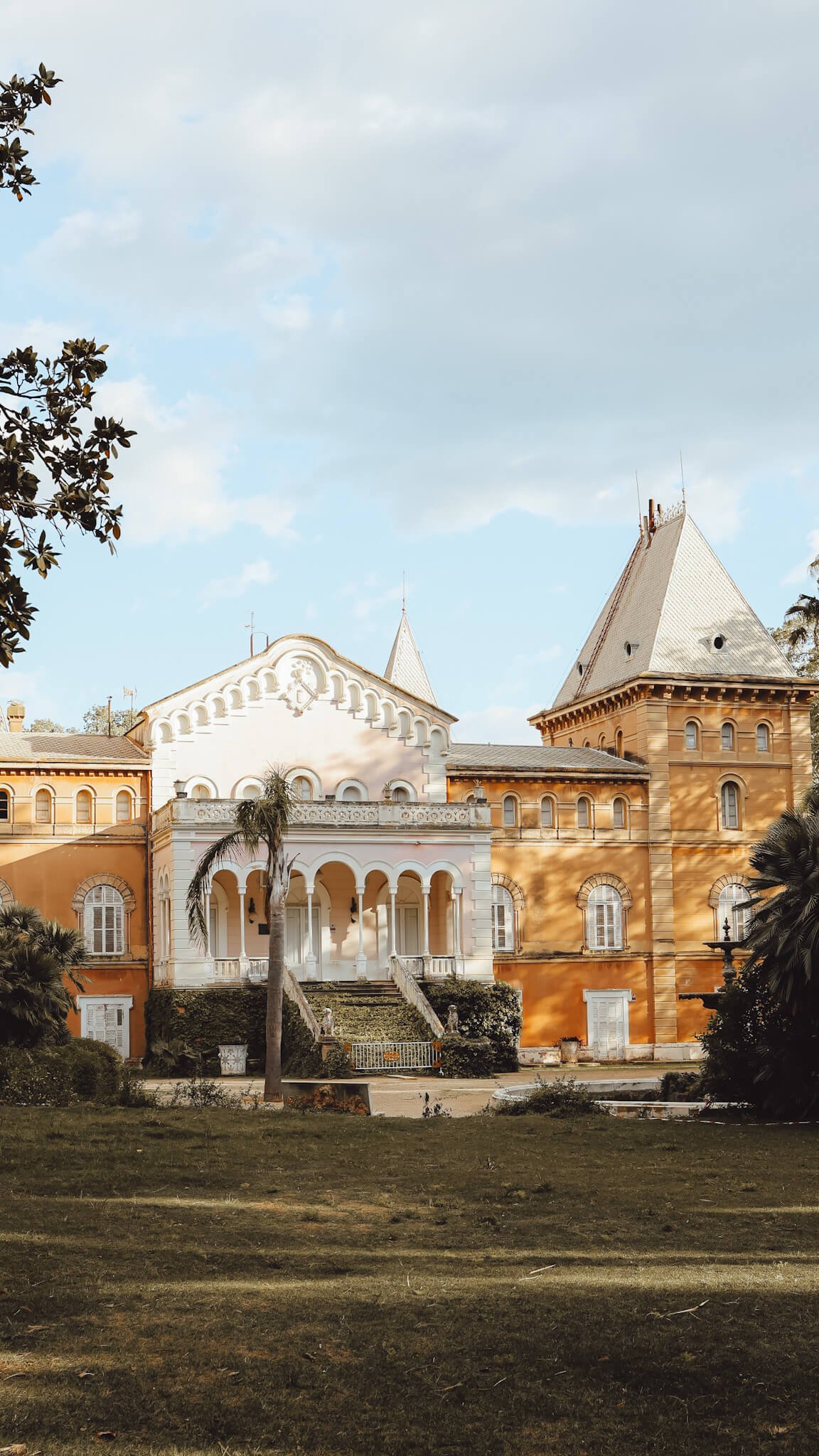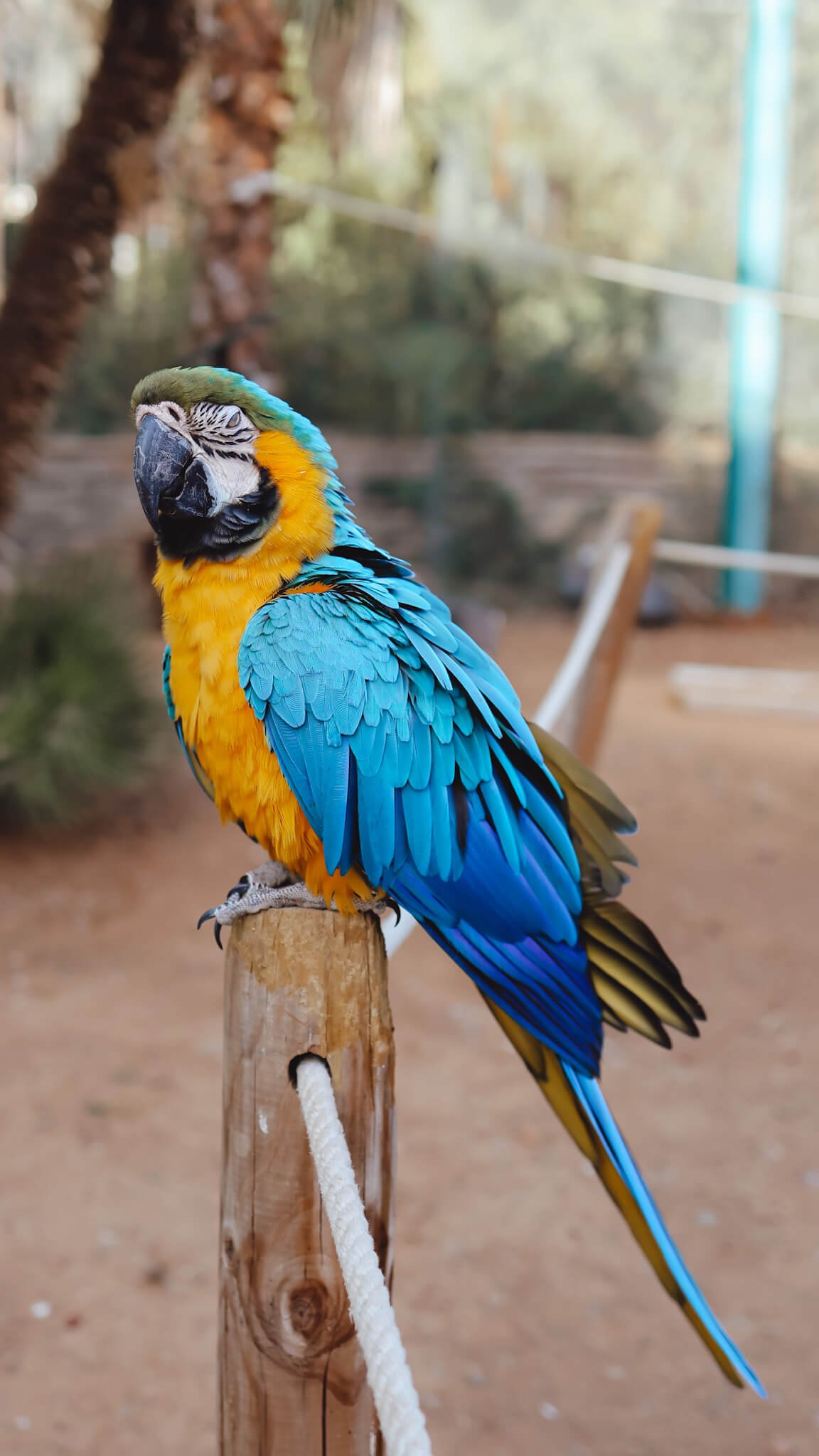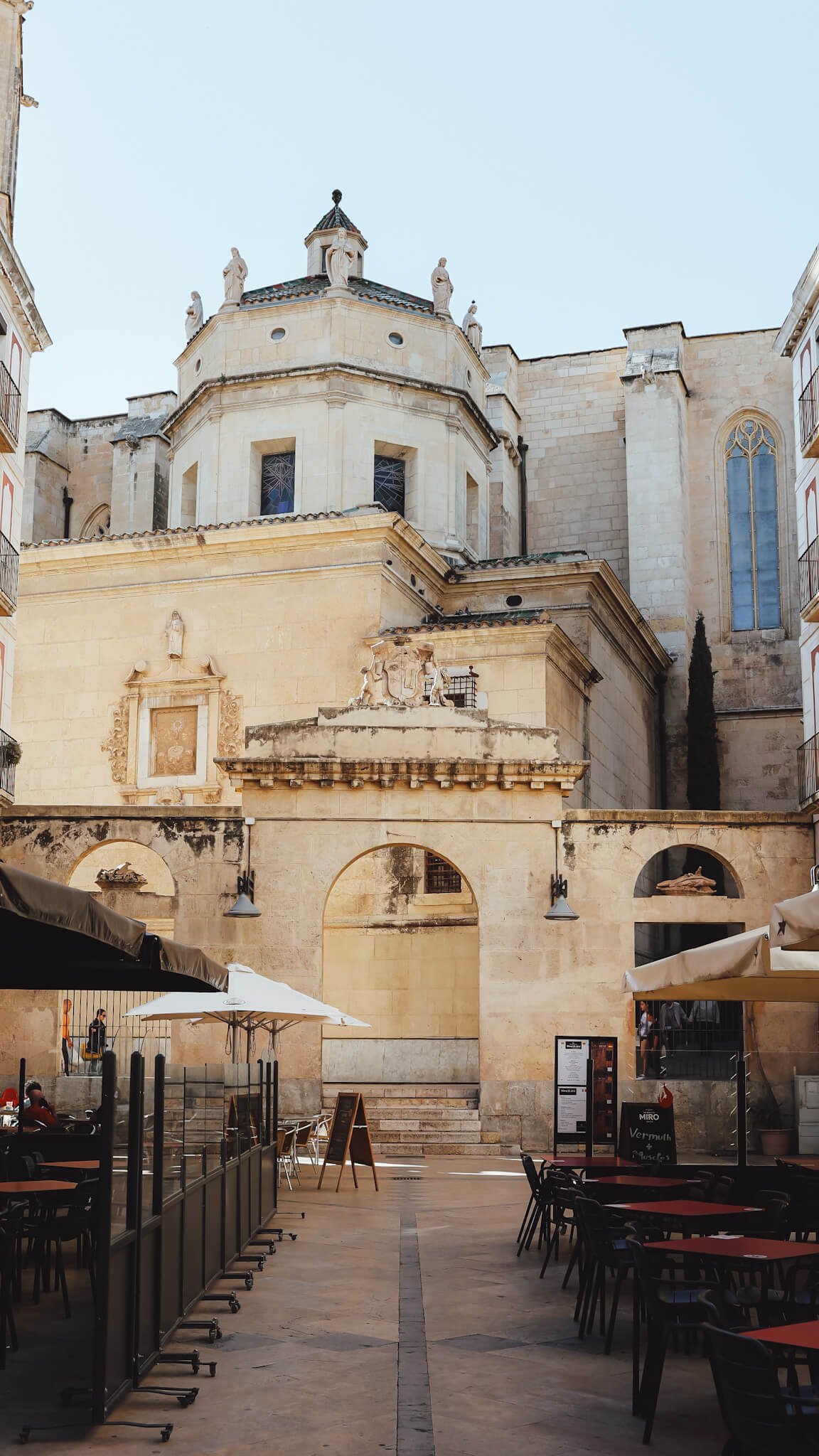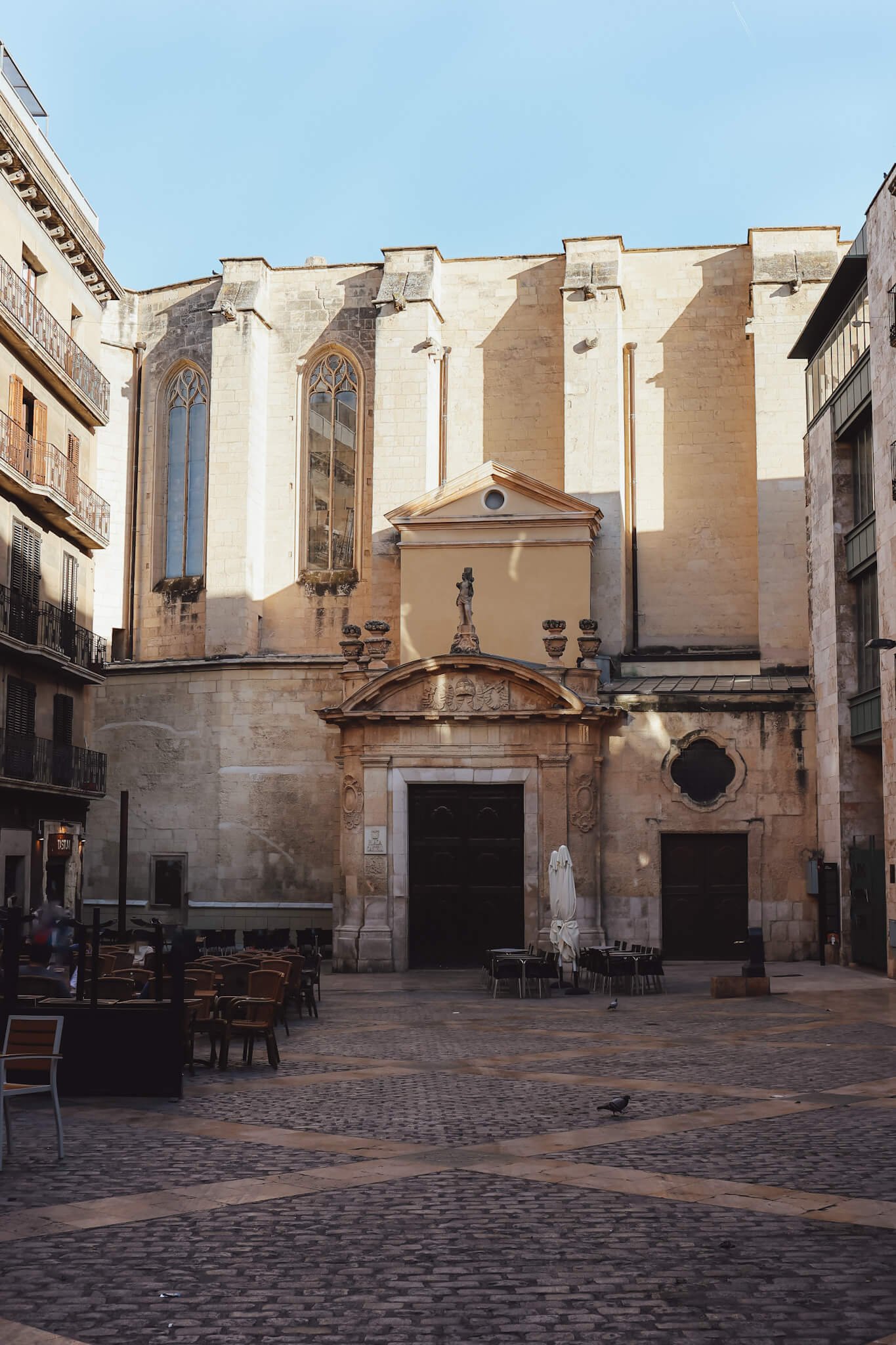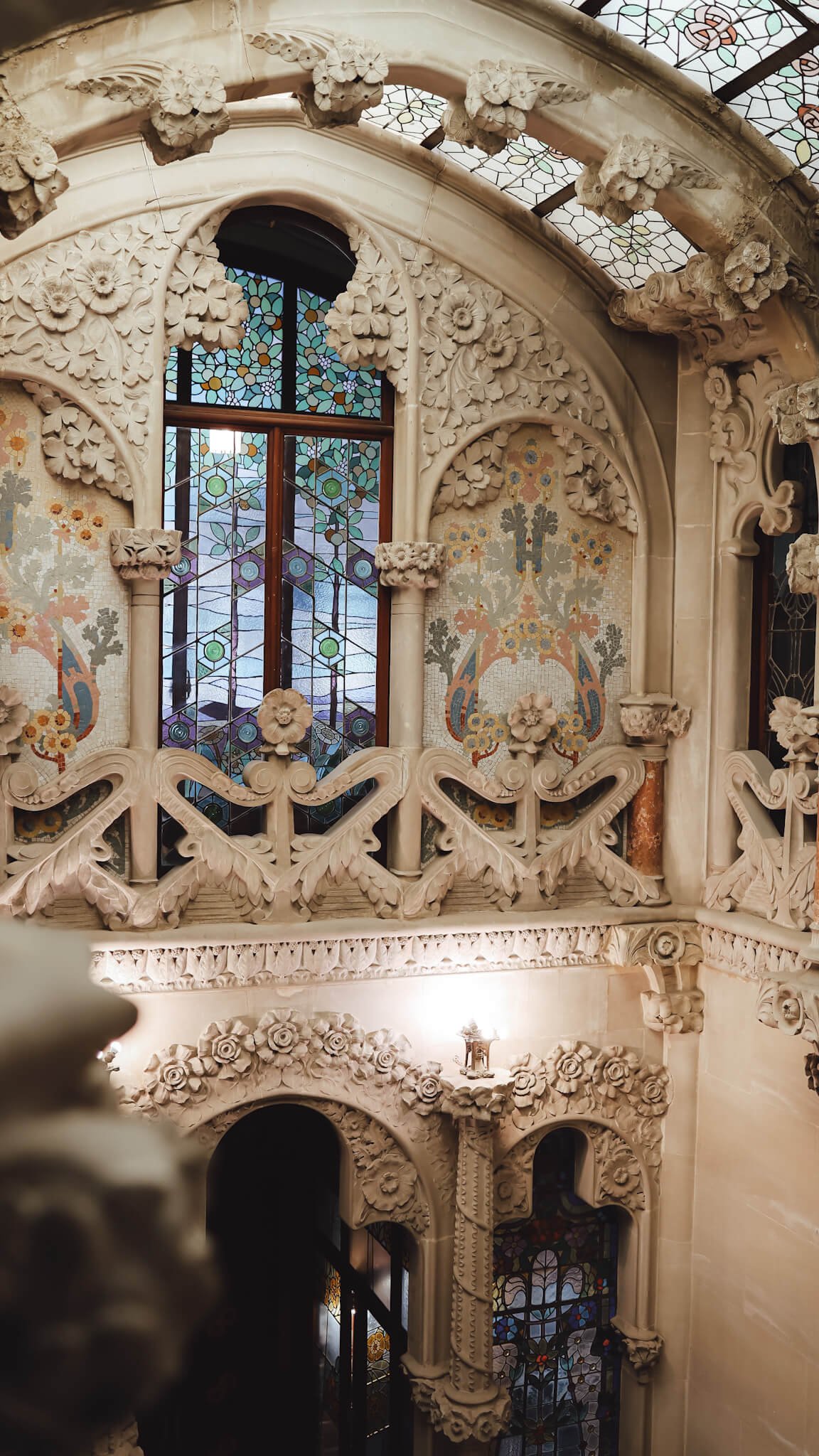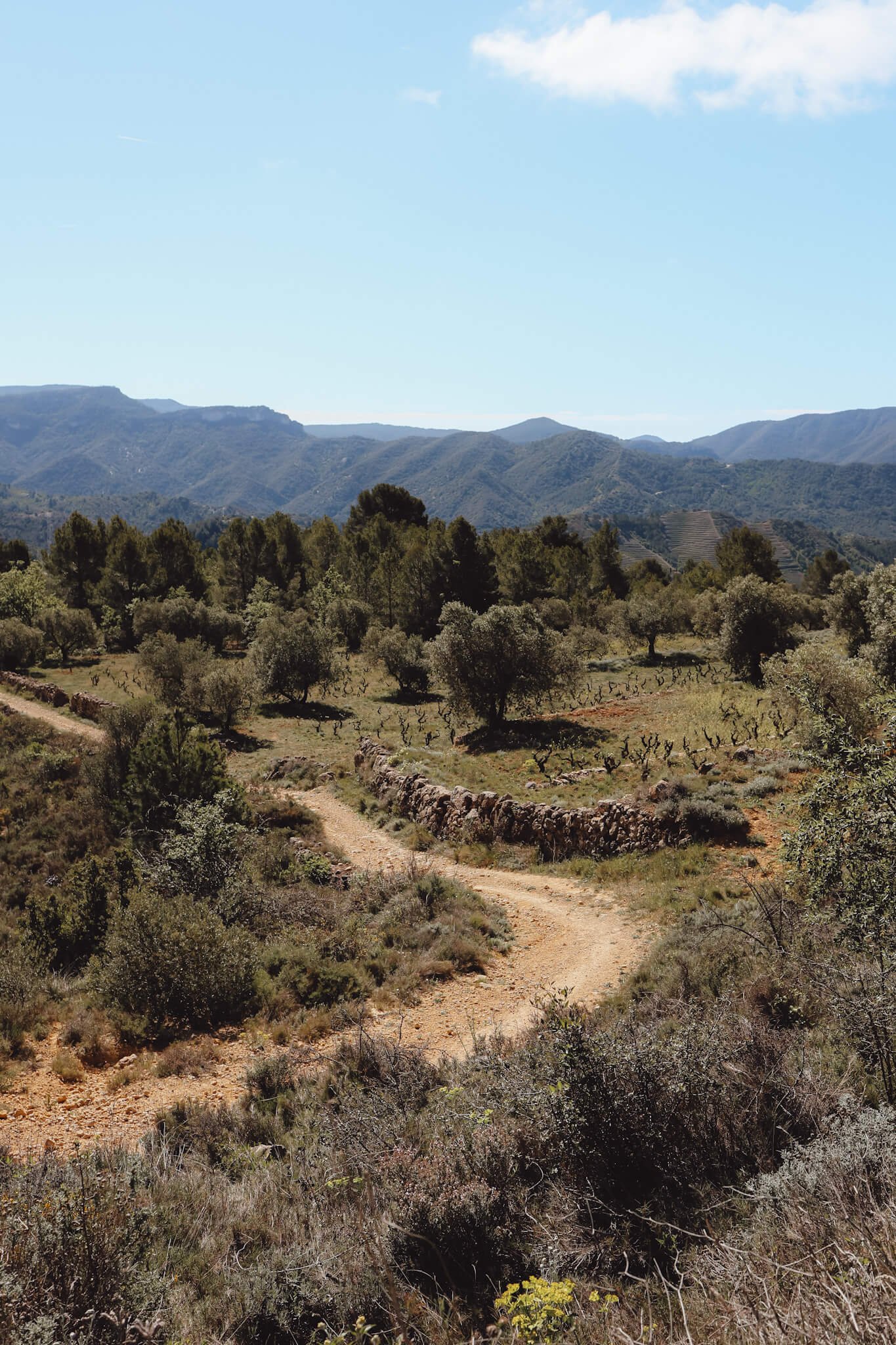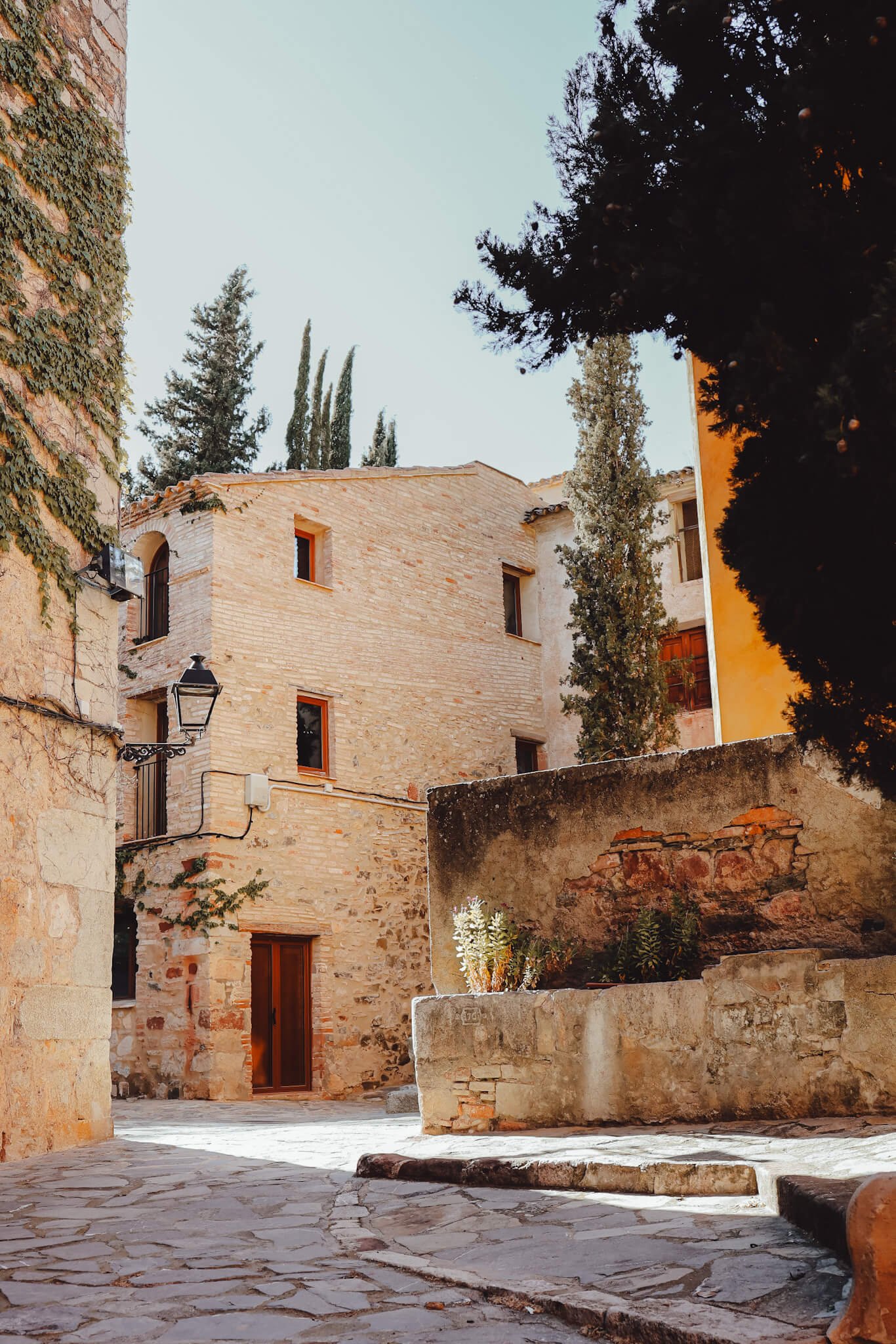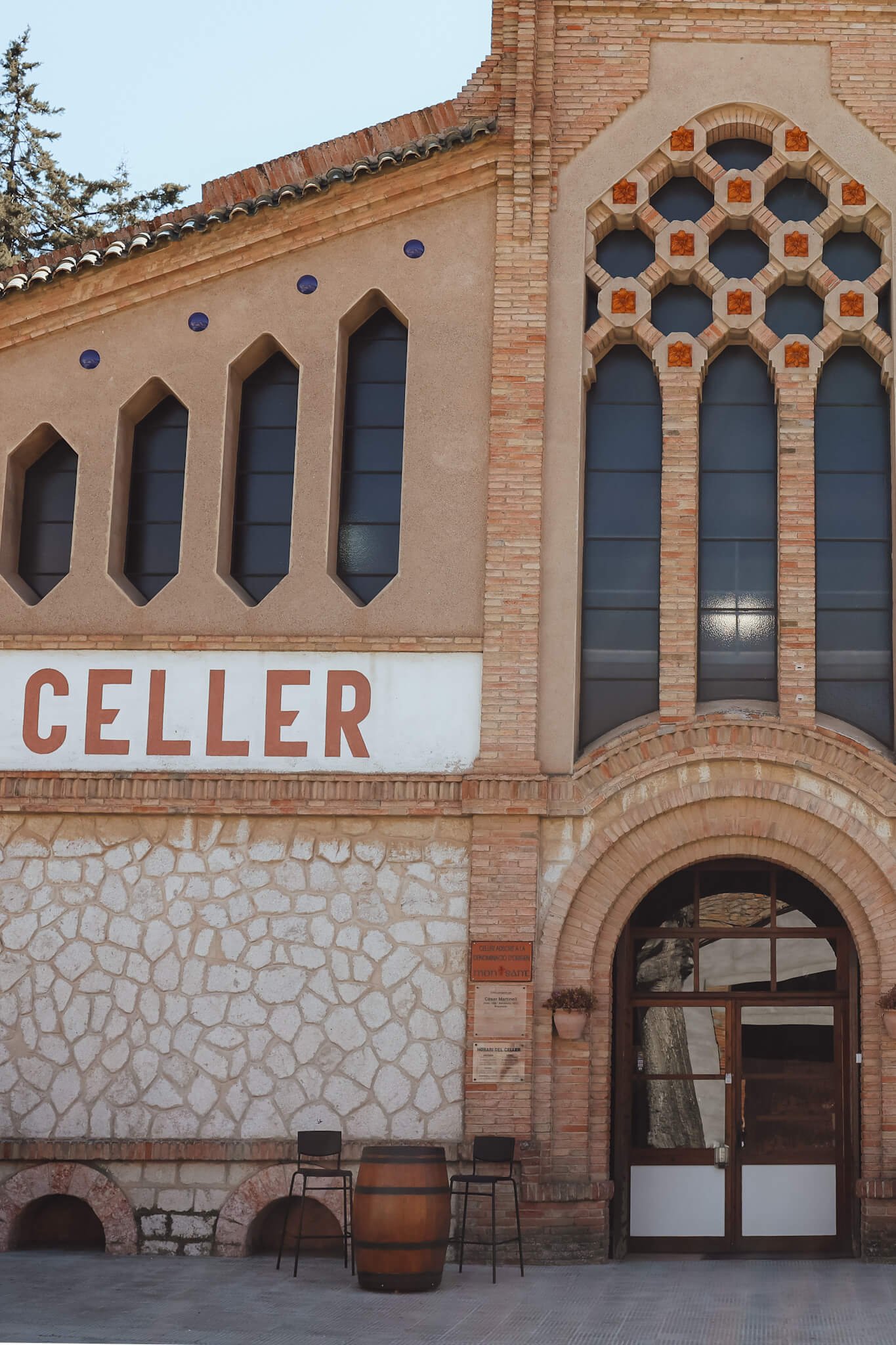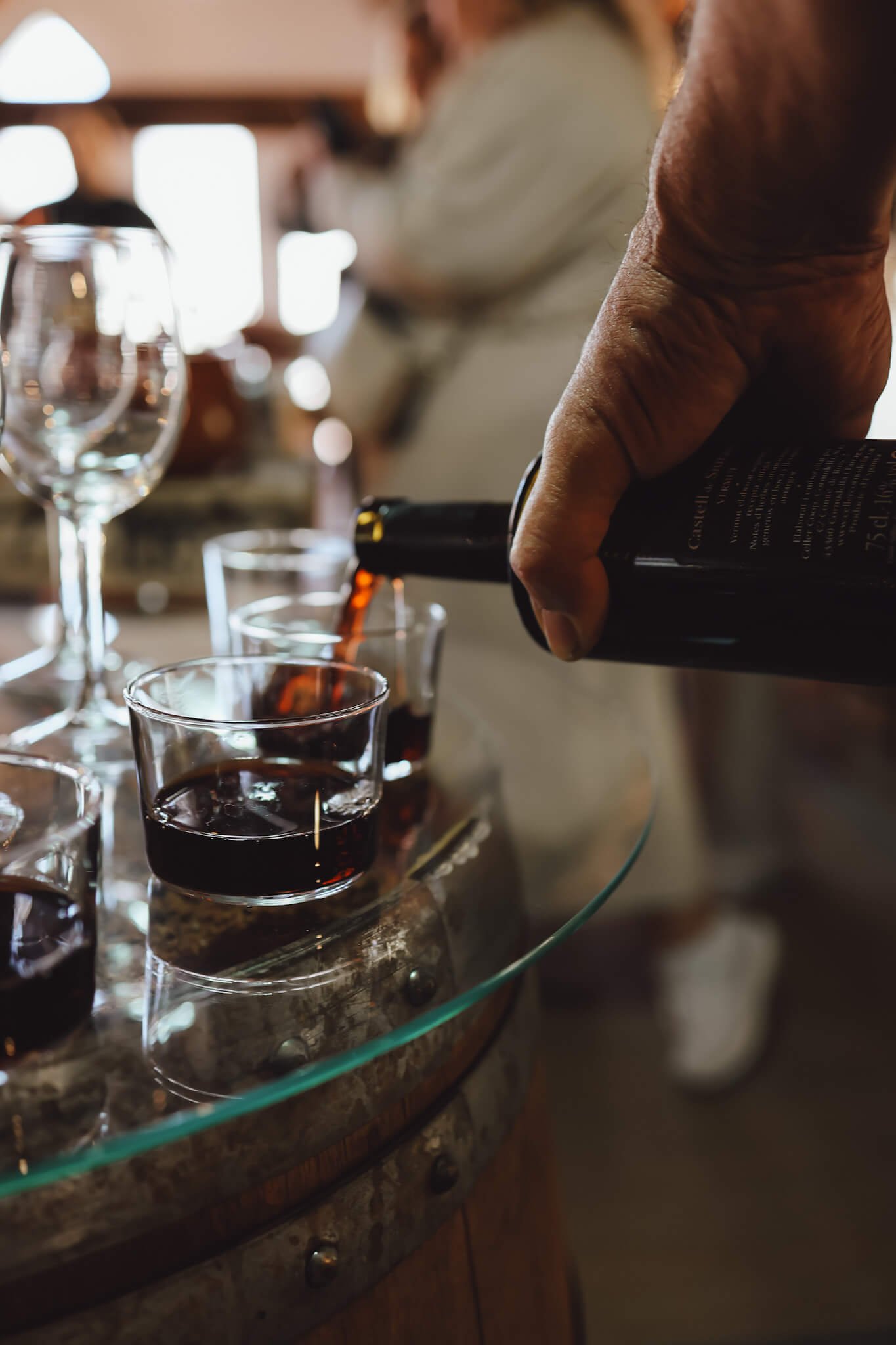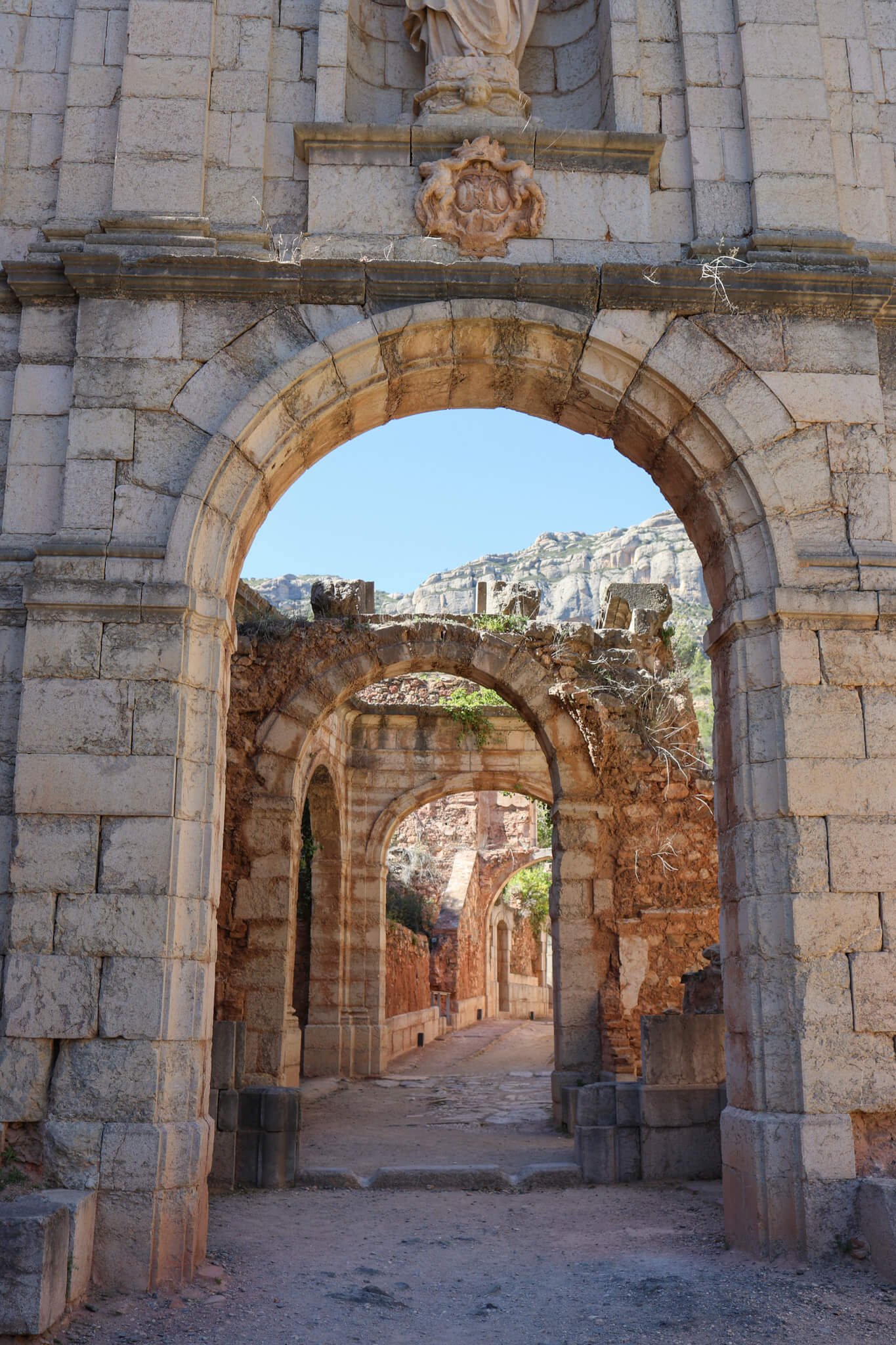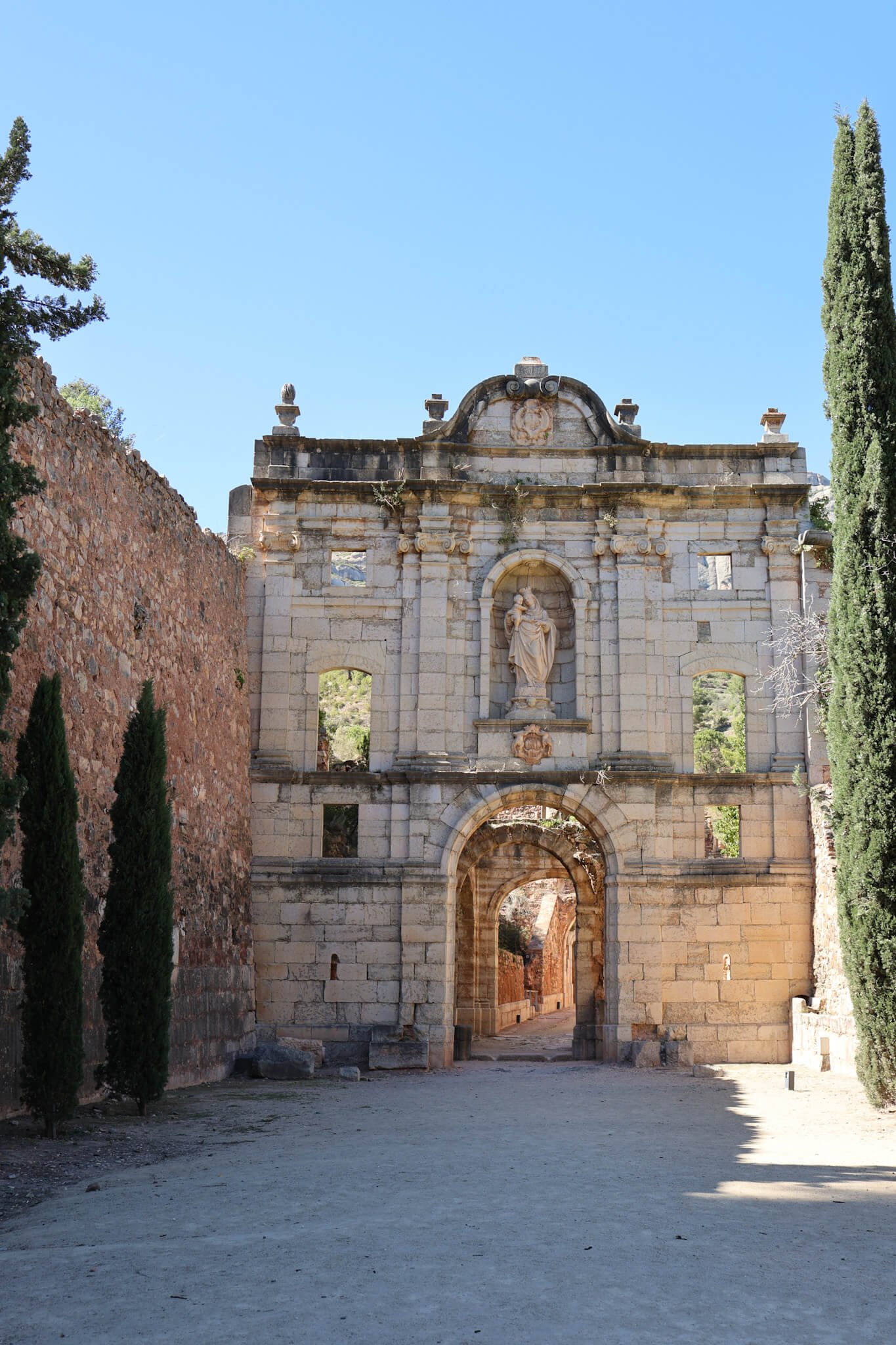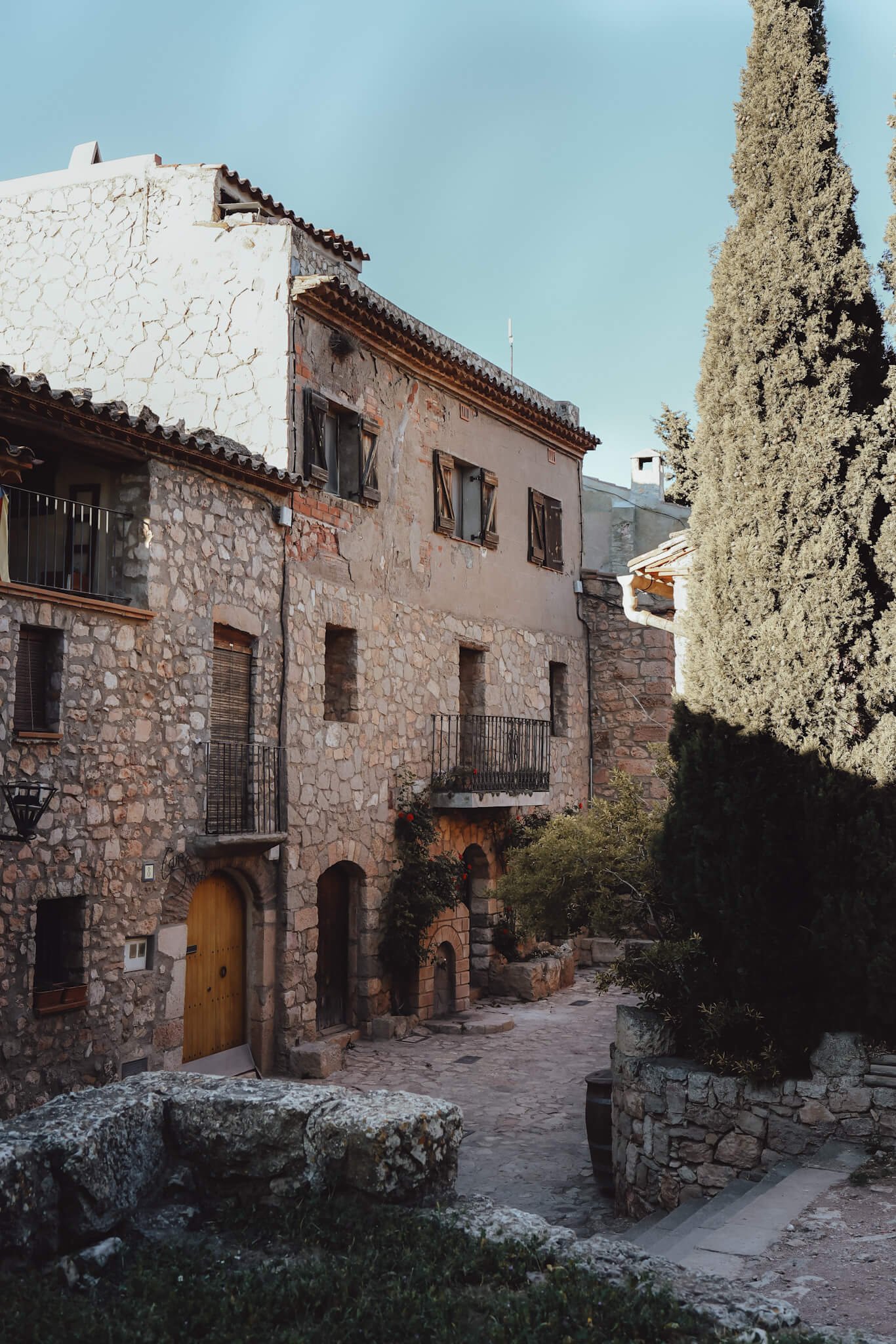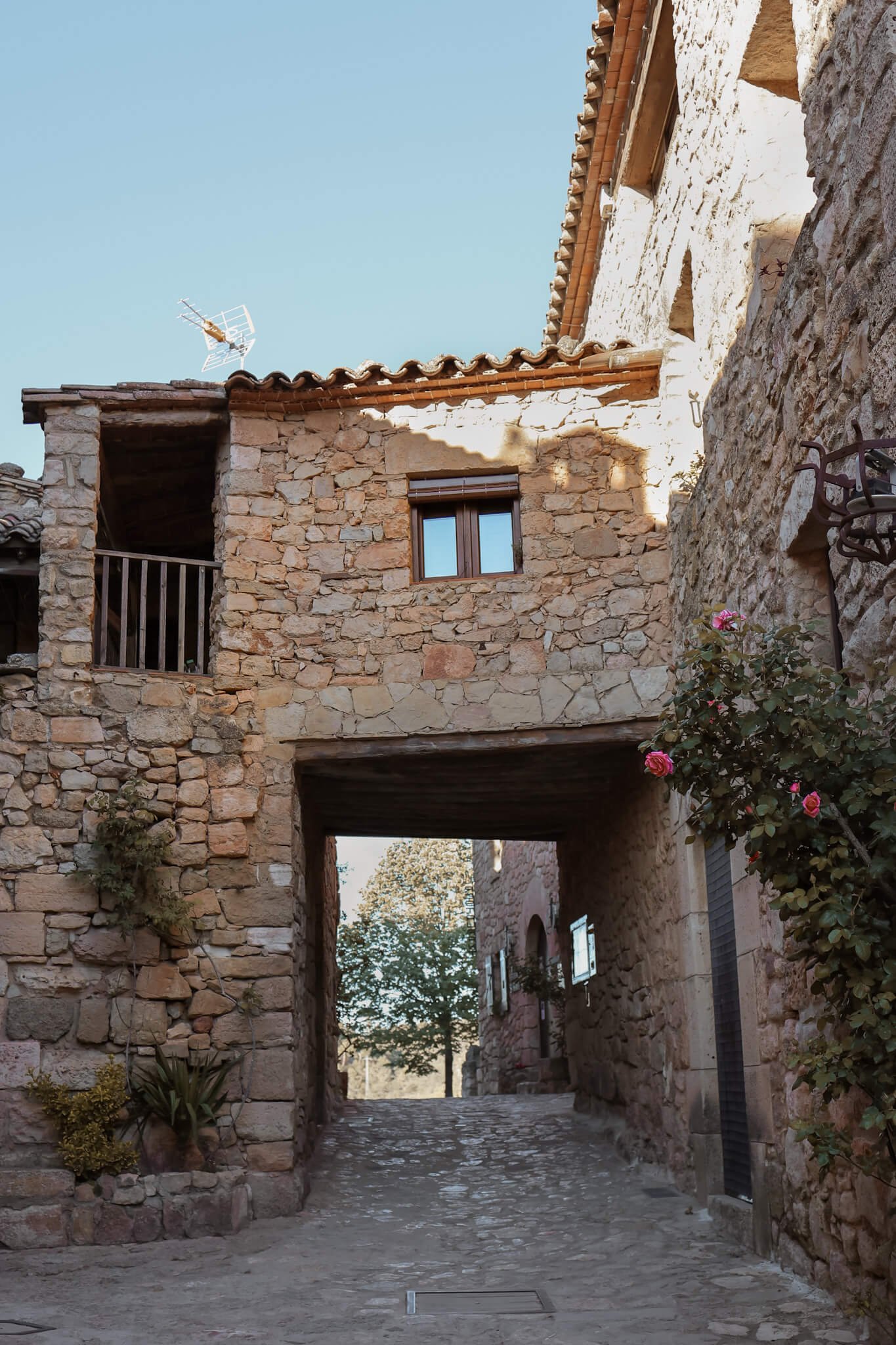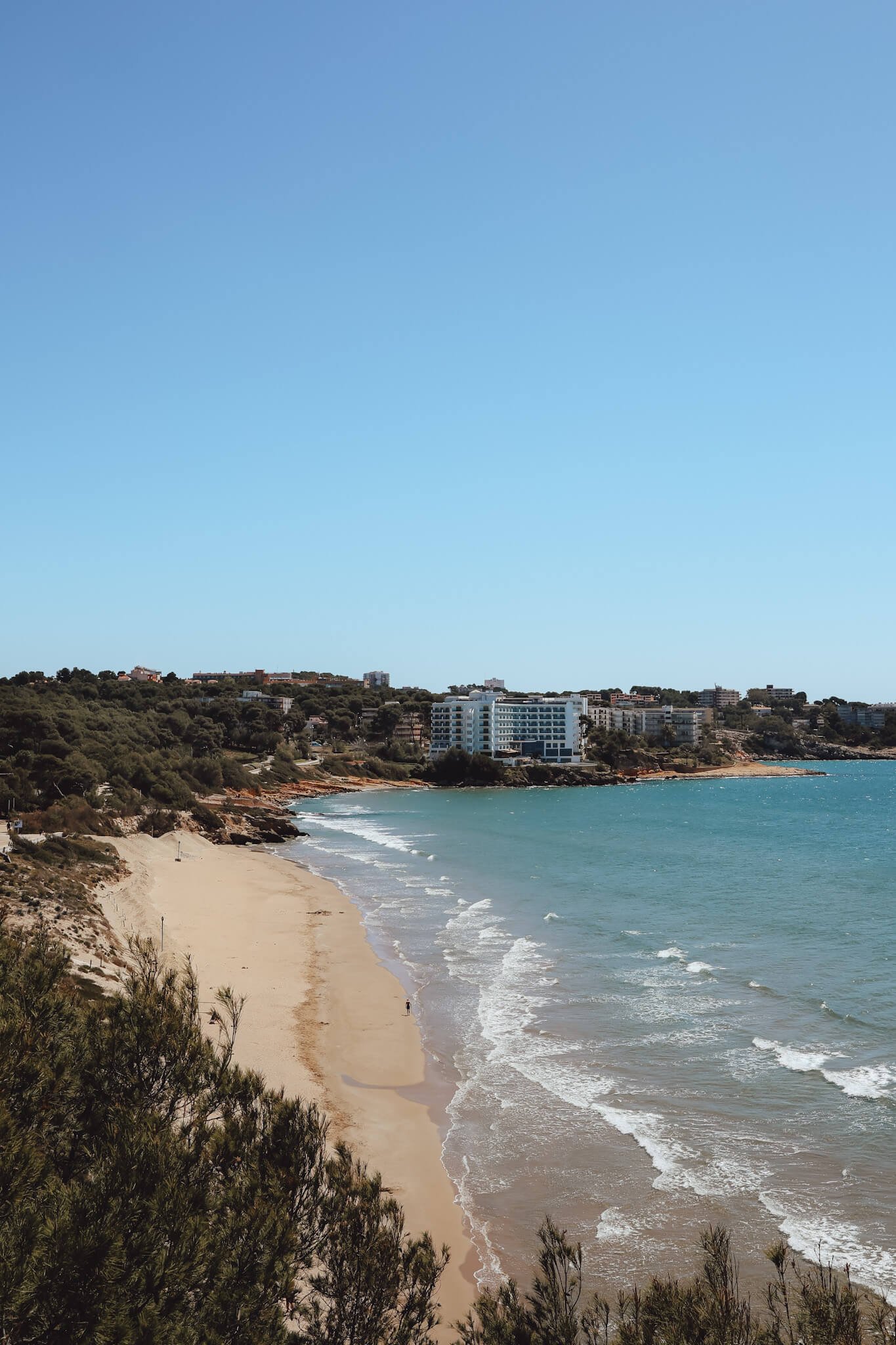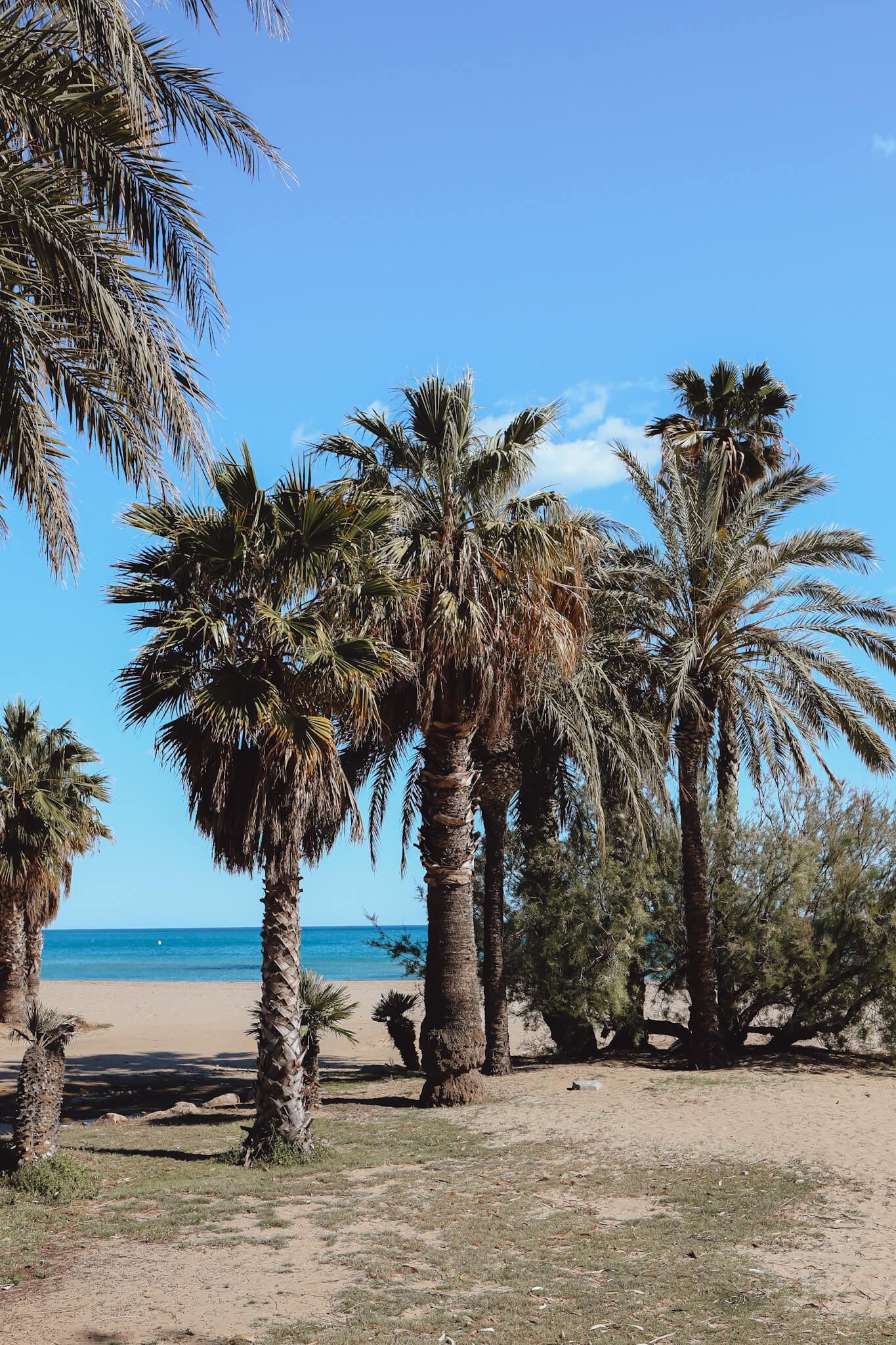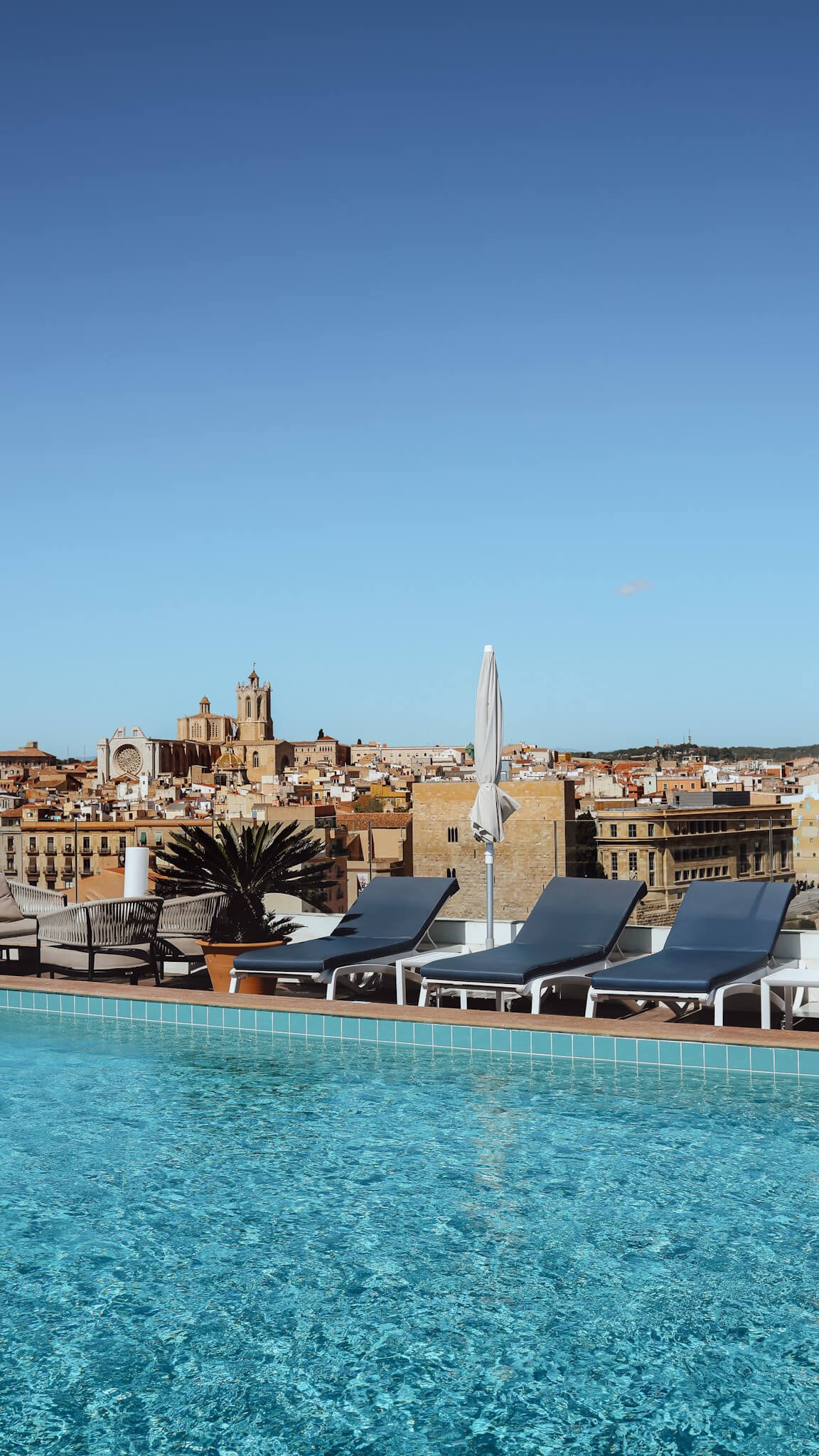Costa Dorada Travel Guide | Ultimate One Week Itinerary
Looking for the best things to do in the Costa Dorada? This is my ultimate Costa Dorada travel guide, including a suggested one week itinerary for couples & families seeking a sun-soaked Spanish adventure.
By: Lesley Stewart | Updated February 2025
Sitting on the sun-soaked northeast coast of Spain, Catalonia’s jewel in the crown is the Costa Dorada (or Costa Daurada in Catalan). A landscape of soft sandy beaches and clifftop paths, the “golden coast” is a region often defined by its coastal towns and beachside resorts.
Located between Barcelona and Valencia, it’s little wonder visitors flock here each year and the Costa Dorada is very much worth visiting; the perfect holiday destination, its Mediterranean climate and swaying palm trees guarantee the dreamiest of summer escapes.
Yet, it has so much more to offer than a traditional beach holiday. Venture beyond the resorts, and you’ll find another side to the Costa Daurada - one filled with adventure, culture, and a booming gastronomic scene.
Though this vibrant region is home to charming harbour towns, peaceful coves, and coastal trails, there are also cultural and cosmopolitan towns to explore; places where Roman ruins and centuries-old cathedrals meet design-led hotels and sophisticated, five-star restaurants.
Inland, the topography changes dramatically, and beaches give way to high, soaring mountains and steep, plunging valleys covered in lush vineyards and olive groves.
Medieval villages only add to the charm, with narrow, stone-built alleyways hiding restaurants serving plates of moreish regional dishes and crisp local wine. Signs of past civilisations have left their mark too, with ancient monasteries and churches adorned with intricate frescos and delicate archways.
Having spent much of last year falling in love with the popular southern Spanish coast, I was initially unsure how I’d feel about this new region.
But I fell hard for the Costa Daurada.
And if you're seeking a diverse blend of a serene beach holiday, a vibrant city break, thrilling hiking trails, mouth watering food, and exquisite wine, then Costa Daurada is possibly your perfect destination too.
So, with this itinerary and careful planning, here's how to spend seven perfect days on the Costa Daurada.
Costa Daurada or Costa Dorada?
Seen both spellings and feeling confused? The first (Daurada) is the correct Catalan spelling, the latter (Dorada) the English-friendly version. Both refer to the same area! And I’ll use them interchangeably in this post.
A coastal gem: 7 days In the Costa Dorada
Day 1: Arrival & exploring Tarragona
Day 2: Salou, Cambrils & Parc Samà
Day 3: Reus day trip
Day 4: Mountain villages & wine tasting
Day 5: Beach day trip
Day 6: Poolside & El Serrallo
Day 7: Depart
Tip/ It’s entirely possible to squeeze this itinerary into five days. Or extend it over 10, depending how many days you have on your trip.
Getting to the Costa Daurada
The main airport in the Costa Daurada is Reus and you’ll find direct flights to Reus from multiple UK airports. I recommend flights to Costa Dorada with Jet2 who fly from Belfast, Birmingham, Bournemouth, Bristol, East Midlands, Edinburgh, Glasgow, Leeds Bradford, Liverpool, London Stansted, Manchester, and Newcastle.
My flights from Manchester Airport included a very generous 22kg of hold luggage and 10kg of hand luggage; perfect for packing bikinis, books, beach towels, and my walking shoes!
Jet2 has a range of holidays to Costa Dorada including luxury options and gorgeous beach escapes.
Airport transfer
Reus Airport is located a short 12km from Tarragona and 13km from Salou, which means a quick and easy transfer to the coast. And if you’re flying with an airline like Jet2, you’ll likely have a hotel transfer included in your package.
But if not, both towns are connected to the airport by public transport and the bus takes around 15-minutes. A one-way ticket costs €2 (at time of writing). And a taxi to each town costs between €30 and €45.
Getting around the Costa Daurada
If you’d like to explore further afield, which I highly recommend, the best option is to hire a car. You can collect a rental from either Tarragona city centre or Reus Airport. Public transport and local buses run regularly between the coastal towns, however, the mountain villages and vineyards are far less serviced.
I recommend Discover Cars; they compare prices from a host of different companies. The best things are their upfront pricing, comprehensive insurance, and free cancellations.
Where to stay in the Costa Daurada
Many visitors to the Costa Dorada stay in the resort town of Salou; however, I recommend basing yourself in Tarragona.
This charming spot has all the buzz of a city break - yet it's perfectly positioned for easy access to the nearby postcard-perfect beaches, coastal villages like Cambrils and Salou, and mountain vineyards. Plus, heaps of wonderful eateries, coffee shops, and bars make this something of a gastronomic favourite.
For the best boutique couples stay, city centre locale, and contemporary accommodation, I recommend the H10 Imperial Tarraco.
Situated on the Tarragona promenade, overlooking both the Roman amphitheatre and the port, this stunning hotel is sleek and stylish. And packed with amenities like a state-of-the-art gym and spa.
Rooms are spacious and airy, with balconies overlooking the ocean, luxe toiletries, a mini-bar, and a coffee maker. There are two pools to choose from: a rooftop pool with a terrace bar (the panoramic views over the city are jaw-dropping), Alta Mare restaurant, and a delicious buffet breakfast guaranteed to set you up for a day of exploring.
I stayed at the H10 Imperial Tarraco with Jet2holidays. Though this was a complimentary stay, I genuinely loved this hotel and will most definitely stay again in the future.
My 7-day Costa Daurada itinerary
Day 1: Tarragona
Arrive
Arrive in Tarragona and make your way to your accommodation.
I stayed in H10 Imperial Tarraco, a hotel on the seafront and a short walk from the city centre’s main attractions. The hotel has a beautiful bar, gorgeous rooms, a rooftop terrace, and two swimming pools.
Once you’ve settled in, it’s time to explore the city.
Lunch
The best way to start any city break is by checking out the local food scene, so walk the short distance to pretty Plaza del Rey and the amazing seafood eatery El Llagut. Here, traditional dishes are slow-cooked, and perfect for a long, lazy day in the sun.
For starters, the fried artichokes and mussels are exceptional. For the main, ask your waiter for the restaurants speciality rice dish.
Depending on when you arrive, the menu of the day (around lunchtime) is only €13, and the set menu is €35.
In the afternoon
Suitably full, it’s time for a wander.
First up, head to Part Alta, the historic centre of Tarragona and a maze of atmospheric streets and busy squares.
Start with a visit to Tarragona Cathedral. Built in the 12th century at the city’s highest point, the cathedral is a stunning collection of soaring spires, cloisters, and an exceptionally grand doorway. Walk around the cathedral to see the intricate carvings, then head inside to see the ornate ceiling and stain glass windows.
Skip the queue and buy your ticket in advance here.
Read Next: Tarragona Best Things To See & Do
Next, make your way into the city centre and towards the impressive Roman ruins.
During the Roman Empire, Tarragona was one of the most prominent cities on the Iberian Peninsula, and today, the modern city coexists with its ancient past.
Personally, my favourite place to visit is the Roman Circus. Built during the 1st century, this grand site once held horse and chariot races and you’ll find some of the best views over the city and cathedral from its upper terraces. Opening hours vary between summer and winter so check them here in advance. Tickets cost €5 per person.
Roman sites to visit in Tarragona
You’ll find ancient Roman ruins, walls, and towers scattered throughout the city. Other historical sites worth visiting (and their Google Maps locations) are:
If historic sites aren’t your thing, follow your feet around the winding streets and lively plazas. Tarragona’s historic centre is very walkable, and my favourite part to explore is the area around Plaça del Fòrum (here), Baixada de la Misericòrdia (here), and Plaça del Rei (here).
There are plenty of wine bars and coffee stops in Tarragona and spending an afternoon sipping a cafe con leche or vermut (the local’s choice of aperitif, a sweet, herby version of vermouth) is a very lovely way to spend your time.
Dinner
For dinner, head to the Cathedral and Casa Balcells. The food here is phenomenal and it’s one of the best restaurants in town, serving delicious Catalan staples and sharing plates at a good price. I recommend the bravos eggplants with miso mayo, Iberian ham croquettes, and Andalusian-style squid with kimchi sauce (very, very delicious).
Read More: Best Places To Eat In The Costa Daurada (coming soon)
Day 2: Salou Coastal Path and Cambrils
In the morning
Start the day by the beach in coastal Salou.
Known as a resort town, it turns out that Salou is amazing for walking. So skip the tourist centre and head instead for a stunning walk along the Salou coastal path. This 9.5km trail follows the coast from Punta de Sant Pere to the lighthouse at Cap Salou and is easily one of the best walks in the Costa Daurada.
Along the way are hidden beaches, sandy coves, and pristine stretches of sand, including glorious views over the Mediterranean.
Mainly a mix of rocky clifftop paths and wooden walkways, the walk itself is easy going, with a few stepped sections. The views are worth the effort - it’s one of the most gorgeous coastal paths I’ve ever walked.
Personally, I’d start the trail early in the day to avoid the midday heat. And be sure to bring a sun hat, SPF, and plenty of water! Oh, and you’ll want trainers for this path, not sandals, and definitely not flip-flops!
Salou Water Sports alternative
Rather than admiring the Med from the shore, adventure seekers will love the 150+ water sports offered by Club Nautic in Salou. Choose from activities like paddle boarding, kayaking, and sailing.
Lunch
For lunch, stop at 4R Casablanca Restaurant in Salou, where you can sample traditional Catalan cuisine, such as seafood fideuà (a paella-style dish with vermicelli noodles), gazpacho, and tuna belly salad.
In the afternoon
By now, you’re probably ready for a relaxed afternoon and a sweet treat. Head to neighbouring Cambrils along the coast (use the ferry boat, bus, or go on foot).
This pretty little coastal town is my idea of the perfect resort town: small, quaint, authentic, with sea views, a harbour, and heaps of outdoor bars.
Wander around the harbour with its colourful boats, stop by one of the cafes for a vermut or coffee, and watch the world go by. Be sure to also stop in Antonio Sirvent for an ice cream - their crema catalana flavour is perfection.
Dinner
Finish your visit to Cambrils with dinner in one of the town’s many incredible restaurants.
We ate in La Selva Street Food, a fusion restaurant with an Asian twist, sharing plates, and quirky decor. I’d go back just to eat the epic beef bao buns.
Parc Samà
If you have time, or a free day, visit nearby Parc Samà. This magical botanical garden covers over 14 hectares of beautifully landscaped gardens, with trees for shade and a host of animals, including peacocks, parrots, and turtles (to name a few).
Day 3: Reus
Of course, visiting the Costa Daurada isn’t all about being by the sea. Though the coastline dominates, the region also includes the inland city of Reus.
Often overlooked in favour of nearby cities Tarragona and wonderful Barcelona, Reus is far smaller but equally charming and very much worth a visit.
Once the commercial centre of Catalonia, Reus retains the flair and vibrancy of a once-rich city. A maze of winding alleyways, pretty streets, lively plazas, and Modernist buildings vie for attention throughout the historic centre. Plus, there are museums, bars and restaurants, and boutique stores.
In the morning
Arriving in Reus, your first stop is Prioral de Sant Pere (here). This beautiful 15th-century church connects the modern city with its historical past, and passing under the ornate archway is a step back in time. For only €2, you can tour the church and bell tower.
There are seven floors to climb, but the stairs (which inspired those in the Sagrada Familia) lead to a 360-degree view of the entire city of Reus. On a clear day, you can see all the way to Barcelona.
Next, wander the short distance to Plaça del Mercadal. A central point and popular meeting place in Reus, it features the City Hall, the Gaudí Centre, and the opulent Casa Navàs. Be sure to book a tour of the latter; inside, it is both fascinating and beautiful.
Lunch
After all that exploring, it’s time for a much-needed break and lunch. There are many excellent places to eat, but I recommend nearby Cafe de Reus. If you can, sit in the bar area and watch a steady stream of tapas and cocktails whizz by.
In the afternoon
Reus is the birthplace of the artist Gaudi and is considered the cultural home of the Modernist movement. In addition to Casa Navàs, other buildings from the period worth visiting are the Pere Mata Institute, Rull House, and Gasull House. The ‘Ruta del Modernisme’ has 80 buildings in total —the best way to see some or all of them is on a tour.
Follow the route independently (get a map from the tourism office in Plaça del Mercadal). You can also book this tour, which combines 29 of the most iconic spots. This walk is not only for art enthusiasts and visits some of the prettiest streets and pastel-coloured facades in Reus.
Finish your day trip to Reus in the city centre, sipping a glass of local vermut in Plaça Prim as the crowds gather for early evening sundowners.
Dinner
Finally, head to Vermuts Rofes. This was once a vermouth manufacturer, and its beautiful outdoor terrace, with its industrial style, pays homage to its workshop past. Now a very excellent restaurant, the food is wonderful, and they still serve their own brand of vermouth.
Day 4: Mountain villages and wine tasting
Away from the coast, Costa Daurada extends inland to neighbouring Montsant Natural Park and the equally wonderful Priorat region.
This area is defined by a chain of mountains and its topography of high peaks and verdant hillsides scattered with vineyards feels a world away from the sea and sangria of the coast.
There are medieval villages amongst the peaks too; easily some of the prettiest villages in Spain, their location nestled amongst mountains rivals the iconic white villages of Southern Spain. There are wonderful eateries, too. And plenty of opportunities to taste the wine and olive oil this area is highly regarded for.
Be prepared to spend an entire day in this lesser-visited but breathtaking region.
In the morning
Drive from the coast into the mountains, following the trail of lush green vines as the winding road climbs steadily higher into the Parc Natural de la Serra de Montsant.
This region produce award-winning wines with worldwide acclaim and easily some of the best wines in Spain. So it goes without saying, but the first thing visitors to the Montsant should do is experience the wine culture.
Wine has a long history in the Montsant and neighbouring Priorat regions; it’s been produced here since Roman times. However, the 19th century saw vines ravaged by pests and wineries brought to the brink of collapse. In recent history, passionate winemakers and hardworking farmers have lovingly revived the vineyards and viniculture of this area. And their love for the land and its bounty is evident in the excellent wines they produce.
There are plenty wineries in the area, but in my experience Celler Cooperative de Cornudella de Montsant, where wine is produced by more than 80 farmers in the region, is the best option.
And if you want to fully experience and appreciate Montsant wine, I highly recommend taking this 4x4 vineyard tour and tasting. This tour is led by an experienced guide and lasts around 2.5 hours. It costs €28 per person and allows you to tour the vineyards, learn about their history, and see how the wine is produced.
During the tour, you’ll walk between vineyards, getting up close with the leafy vines and wild flower meadows. Be sure to wear trainers; this is an easy going walk but the terrain can be rocky in parts.
Then, back in the Celler, taste the wonderful vermut and wines produced here alongside snacks like local olives.
It’s worth noting that Siurana Tours is attached to the Celler and run a range of activities in the Montsant/Priorat areas, such as bigger wine tours, hiking, and cycling trips. If you’re staying in the area for longer and seeking an outdoor adventure or a deeper wine tourism experience, their activities are perfect for couples. Be sure to book in advance.
Read More: Wine Tasting In The Montsant (coming soon)
Lunch
A morning spent walking deserves a hearty lunch.
In the charming mountain village of La Morera de Montsant you’ll find this restaurant, a family-run eatery serving delicious, regionally authentic dishes. Those not driving can also indulge in delicious glasses of local wine.
If you’re looking for menu inspiration, the strawberry salad starter, snails, and slow-cooked beef cheek main were big hits with my group and devoured quickly!
In the afternoon
Back on the road, cross from the Montsant area into the historic Priorat region.
First, make your way to the mountaintop village of Pobodela. Nestled between mountains, this pretty medieval village is located in the centre of the Priorat region - its ancient stone buildings and charming alleyways perfect for a slow afternoon wander.
Next, a short drive to the equally pretty (but smaller) village of Escaladei. After a stroll around its pretty streets, pop into Moli de L’oli to taste their flavoursome locally made olive oil.
Just beyond the village is the ancient Carthusian Monastery of Cartoixa d'Escaladei (pictured above). Whilst the guided tour may only appeal to the most ardent history buffs, its ornate archways, beautiful fountains, and mountain views are a gorgeous distraction. Tickets cost €5 and you can check the opening hours here.
Back on the road, a short drive to the medieval village of Siurana at sunset signals it’s almost time for home. You’ll need to loop back on yourself for this stop, but trust me, golden hour from the mirador in Siurana is worth it - watching the light fade over the lush valley far below is a truly magical experience.
Dinner
Finally, its time for dinner. Either head back to your hotel and its nearby eateries. Or, as I did, return to Cornudella (where the day started) and book a table at El Palauet del Priorat.
The restuarant inside this small hotel serves exceptional food paired with local wine, surrounded by centuries old stone-built walls. It’s very cute and the staff very lovely.
Day 5: Beach Day
If all this exploring is making you crave a beach day, then plan your final days in the Costa Daurada to be big on relaxation.
This region lives up to its name - Costa Daurada translates as the golden coast in Catalan - with miles upon miles of pristine sandy beaches, coves, and bays. Beach life is taken seriously here, with soft sands kept immaculately clean.
With so many picturesque beaches and pretty coves to explore, spending a day or two by the coast makes sense.
Tip/ either scatter your relaxation days through this itinerary or keep them till the end.
Tarragona Beaches
The Tarragona coastline runs for some 15km and is dotted with multiple beaches and pretty coves. The best beaches within easy distance of the city centre include Platja Arrabassada, Platja del Miracle, and Savinosa Beach (the latter being nudist-friendly). Each has services and beach bars.
Salou Beaches
Whilst Salou has the most sandy options (there are 25 beaches in the area, 9 with services), personally, I would skip Salou’s main town beach (Llevant Beach) in favour of one of the quieter and prettier coves.
My favourites are Llarga Beach, Penya Tallada Cove, Vinya Cove, and Llenguadets Cove. If you prefer to have services nearby, Platja dels Capellans is the best option for less busy sunbathing but with easy access to toilets and a beach bar.
Most of the coves and beaches can also be visited on the Salou Coastal Path, so if you’re short on time you may wish to combine your walk with sunbathing!
Aquum Spa
Beach not your thing? Then spend a day focussing on your wellbeing at Aquum Spa. Located in nearby La Pineda, near Salou, enjoy a day of relaxation in the indoor and outdoor pools, treatment rooms, saunas, steam rooms, hydromassage, and plunge pools.
Tickets cost €29 per person for three hours entry.
Day 6: Poolside and El Serrallo
Your final full day in the Costa Daurada, spend your morning by the pool and early evening watching sunset at the harbour.
In the morning
Chances are your hotel will likely have an incredible pool and terrace bar - and you want to take full advantage of these. After breakfast, spend your morning soaking up the sun, read a book on your lounger, and later enjoy an ice cold beer with lunch on your rooftop terrace.
In the afternoon
Round off your day with a trip to El Serrallo, Tarragona’s harbour quarter. Pastel-hued homes overlook a pretty harbour of luxury yachts and working fishing boats. There’s a fish market here, too, and seafood is, as you might expect, the best thing to order at every meal.
Dinner
There are many eating places but my favourite is harbourfront restaurant El Pòsit. The seafood here is freshly caught and the dishes are exceptional.
Open daily for lunch and dinner sittings; be sure to book your table in advance.
Day 7: Mediterranean balcony and depart
If this is your last day in the Costa Daurada, after breakfast take a walk along Tarragona promenade and soak up the last of the sunshine.
Be sure to stop at the Balcó del Mediterrani (Balcony of the Mediterranean). You’ll find some of the best coastal views here - and it’s a beautiful spot to say goodbye to the golden coast.
